BREAKT HROUGHS
State of Thirst

Also...
Globalization:Profit vs.Process
Presidio Ecologist Terri Thomas
Growing Hope in Rural Indonesia
College of Natural Resources F all 2005 VOLUME 11, NUMBER 2
AM agazine for Alumni and Friends of the College of Natural Resources, University of California,Berkeley
Dean Ludden visited Markham Elementary School in Oakland to teach a class of third-graders about the earliest stages of life.The dean and his lab staff (Julie Niedermayr,Marissa Hirst,and Leo Curatti) helped the kids inject sea urchins with potassium chloride to make them produce gametes. The children then inspected the sperm and eggs under microscopes and watched wide-eyed as fertilization and cell division took off.“I hope it sparks their curiosity,”Ludden said about the experiment,which he brought to Markham with the help of Oakland City Council Member Desley Brooks. “I hope they gain confidence and realize that they can ask questions about their surroundings and think up ways to answer those questions.”

Message
from the Dean
This spring mylab group and I enjoyed the excitement of leading two dozen third-graders at Oakland’s Markham ElementarySchool through a sea urchin egg fertilization experiment. The kids’ curiosity, enthusiasm, and abilityto form their own observations reinforced two things for me: howgreat it is to bring knowledge into the communityand the broader world; and that we learn as much from our students, no matter what age, as theydo from us. This issue of Breakthroughs illustrates the myriad ways CNR faculty, staff, alumni, and students create positive change far beyond the confines of campus, and the crucial role inspired educational programs playin making a real difference.

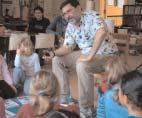
Locally, CNR-affiliated programs provide manyopportunities for our faculty, graduate students, and undergrads to engage elementarythrough high school-aged youth. Professor Rosie Gillespie’s ambitious Exploring California Biodiversityprogram, for example, brings ecologyto life for BayArea high schoolers, and the Environmental Leadership Outreach Program, led byMark Spencer and Professor SallyFairfax, pairs CNR undergrads with Oakland teens to tackle local restoration projects. On page 7, read about a genomics training program that provides teens with the
kind of hands-on lab experience most budding scientists don’t have until well into their college years.
While we’re committed to outreach close to home, the impact of CNR’s work is also felt across the globe, and two great examples are featured in this issue. Assistant Professor Dara O’Rourke’s work is improving lives and the environment at industrial sites around the world (page 20). Meanwhile, the Beahrs Environmental Leadership Program, an amazing project made possible byDick and Carolyn Beahrs, recentlyconcluded its fifth summer course. The program gives environmental professionals from around the world intense, career-specific training that enhances their capabilityto solve real-world problems. Starting on page 24, read about the success of a recent alumna of the program in teaching sustainable farming, rudimentarybusiness skills, and self-confidence to women farmers in a remote Javanese village. Reading this storymade me keenlyaware of howeducation—whether it’s learning life-changing agricultural skills or watching cells divide under a microscope—links students and teachers across all age and cultural boundaries.
I hope you enjoythis issue of the magazine. If you have your own storyto tell, turn to page 9 for details on our first-ever essay contest for alumni.
Cover photograph by Genevieve Shiffrar
Dean Paul Ludden
P hotos by Julie Niedermayer
Paul Ludden
EDITOR
Cyril Manning
12STATE OF THIRST by Carol Hunter
Balancing the water needs of California’s cities, agriculture, and the environment
20 CHAIN REACTION by Nathanael
Johnson
Dara O’Rourke’s field research traces the impact of globalization
24 NANI’S FORESTSCHOOL by Adam B. Ellick
Nani Saptariani teaches more than just farming to women in rural Indonesia departments


2 LETTERS
3BRIEFS
Exploring the sustainable food scene
Algae studybenefits human health
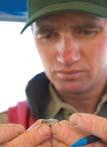
Berkeley’s “Fire Information Engine”
Giannini gift turns 75
G enetics boot camp
Redefining risk assessment for the WTO New faculty
Our first-ever essay contest: Win a 60GB iPod!

Details on page 9.
CONTRIBUTING WRITERS
Barry Bergman
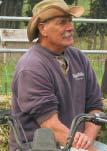
Wendy Edelstein
Adam B.Ellick
Patrick Farrell
Carol Hunter
Nathanael Johnson
Sarah Yang
CONTRIBUTING PHOTOGRAPHERS
Adam B.Ellick
Dominic Lancaster
Tracy Lenihan
Julie Niedermayer
Dara O’Rourke
Genevieve Shiffrar
Alexander Warnow
Designer: Ron Addad
Editor: Ann Brody Guy PRINTING UC
BREAKTHROUGHS IS PRINTED ON RECY CLE D-CONTENTPAPER
DEAN
DESIGNAND PRODUCTION UC Berkeley Extension Communication and Marketing Services
Printing Services
All rights reserved. Breakthroughs is a registered trademark.
direct all correspondence to: Breakthroughs
of Natural Resources
of California, Berkeley
Giannini Hall, #3100 Berkeley, CA
(510) 643-8860
breakthroughs@ nature.berkeley.edu
ht tp: //nature.berkeley.edu Fall 2005 in this issue
College of Natural Resources http://nature.berkeley.edu | 1
Volume 11• Number 2 ©2005 by The Regents of the University of California.
Please
College
University
101
94720-3100 Telephone:
E-mail:
Website:
BREAKT HROUGHS
features
SYLLABUS
in on Environmental Economics and Policy39C 28MYSTORY
Ecologist Terri Thomas 31COLLEGE SUPPORT 33 ALUMNI NEWS
Memoriam:
Class Notes 24 12 20 3
…and more 11
Sit
Presidio
In
Robert Colwell
We want to hear from you! Breakthroughs welcomes letters to the editor.Send your feedback by e-mail to breakthroughs@nature.berkeley.edu, or by postal mail to:
University of California,Berkeley
Breakthroughs Editor
101Giannini Hall #3100 Berkeley CA 9472 0-3100
Letters are subject to editing for length,format,and clarity. P lease include a phone number for verification.
In your recent article about geneticallyengineered crops, the article title asks, “Who’s Afraid of GMOs?”(Cover story, Spring 2005). I’m raising myhand out here—“I am! I am!”
On page 4 of the same issue, a student group is shown uprooting an invasive plant that competes with a native species. The serious disruptions caused byinvasive—but non-GMO—species ought to be lesson enough in the dangers posed bywidespread, unsupervised tinkering with genetic codes. The potential harm from genetic pollution is simplytoo great, and too irreversible, to be accepted.
Your researcher PeggyLemaux says that the justifications for continued development of geneticallyengineered crops are “to relieve hunger and lighten the significant environmental impacts of current agricultural practices.”But these goals can just as well be met byother, less dangerous means, without the fearsome risks posed to the natural world byGMOs. Food shortages, for example, are commonlytraceable to poor economic and trade policies. And whynot ease the negative environmental impacts of current
agricultural practices byencouraging more sustainable farming techniques, such as organic husbandry?
It’s clear the real push to develop GMOs comes not from altruistic motives, but from large corporations who stand to profit bycontrolling the sale and distribution of the new, “improved” organisms. Do we see groups of Third World farmers clamoring to buyseed from Monsanto and Syngenta? Is it reallynecessaryto expose the natural environment, our common genetic heritage, to such great risk for the private profit of a few corporations?
Thanks, bythe way, for your great little magazine! Verychallenging and thought-provoking.
Joel Hamilton, Ph.D. (ARE, ‘71) Boone, NC
To implythat researcher David Quist (along with Ignacio Chapela and myadviser, Miguel Altieri) are “afraid”of biotechnologydoes a disservice to them as scientists and to the science theypractice. Far from being afraid, a word associated with ignorance and timidity, these scientists have examined the potential impacts of agricultural biotechnologies—in terms of agronomic, ecological, social, and economic indices—and concluded that the technologies are highlyproblematic and, in most cases, just plain unnecessary.
So instead of asking “who’s afraid”of agricultural biotechnologies, you might consider instead publishing a more nuanced evaluation of their costs and benefits, and compare those costs and benefits with other, less technological approaches to improving the sustainabilityof food production.
Josh
For another perspective on GMOs, see “What Constitutes Risk?” on page 8.
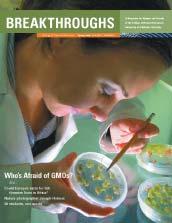
| BREAKTHROUGHS FALL 2005
Letters
2
Miner, M.S. (ESPM ‘04) Analyst, UC Cooperative Extension, Alameda County
Briefs
Sustainably Scrumptious
L ast semester, Lynn Huntsinger,associate professor of environmental science,policy,and management, led 20 freshmen across the Bay Area for a daylong seminar called “Follow Your Food.”The goal of the class,Huntsinger says,is “not only to explore where food comes from,but also to examine how it’s connected to our community and environmental well-being.”
The group met on campus at 7 a.m.on a gray Saturday in late February,then made its way to the Ferry Building Farmers Market in San Francisco,where they split up to shop for that evening’s meal.Huntsinger charged students with asking the food vendors a series of questions: Where does the food come from? Is it natural? Organic? Why or why not?
With their purchases packed into coolers,the class piled into a chartered bus and headed north.Along for the ride was Professor Sally Fairfax,Huntsinger’s colleague, who is working on a book about the Bay Area’s locally grown, chemical-free,and sustainably produced foods.
The first stop was Chileno Valley Ranch in Petaluma, where Sally and Mike Gale raise beef cattle.Three years ago the Gales converted what was once a traditional beef operation
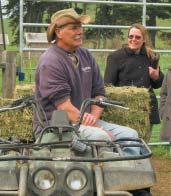

to a grass-fed ranch, where they also grow nine varieties of apples in a small orchard.
Nex t, the group visited pedigreed foodies Sue Conley (a former co-owner of Bette’s Oceanview Diner in Berkeley) and Peggy Smith (who honed her culinary skills at Chez Panisse) at a once-dilapidated hay barn in Point Reyes Station that is now home to their organic market and cheese-production facility,Cowgirl Creamery.
At the third stop,Hog Island Oyster Company in Marshall,the group got a lesson in oyster cultivation and shucking.Even Huntsinger,who had never sampled a raw oyster before,got swept up in the fervor and downed a Hog Island Sweetwater.


At 6 p.m.the group headed back to Huntsinger’s East Bay home,where they feasted on their bounty.“The argument against this way of eating is that it’s more expensive,”said Huntsinger about the meal that the class finished.“But in general we might do better in terms of our health if we chose a little more carefully, paid a little more,and ate a little less.”
—Wendy Edelstein
College of Natural Resources http://nature.berkeley.edu | 3
Above left,Mike Gale,coowner of Chileno Valley Ranch, with CNR Associate Professor Lynn Huntsinger.“I think one of the ways we can protect our environment is to make the right choices about what we consume,”Huntsinger says.
Top left,Black Angus cows at Chileno Valley Ranch.
Right,Sally Fair fax,professor of environmental science,policy, and management,pries a Hog Island oyster out of its shell.
Top right,sampling organic cheese at Cowgirl Creamery.
T racy Lenihan
Tracy Lenihan
Tr acy Lenihan
W endy Edelstein
A Fire Engine for the Information Age
When fire engines race to the scene of homes threatened by a wildfire,it’s often too late.Fires are best fought through prevention,and now researchers are building a new kind of fire engine focused on just that.
A$1million project funded largely by the U.S.Fire Administration,the “Fire Information Engine”under development at UC Berkeley will use geographic fire-hazard data to provide detailed,Web-based information on fire risks,and will rate the hazards on a parcel-by-parcel basis.Taking into account data such as slope steepness, vegetation density,building materials,accessibility,and defensible space,the tool will allow property owners and communities to understand the fire hazards they face and learn how to mitigate them.
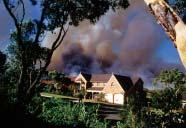
The brainchild of Assistant Cooperative Extension (CE) Specialist Max Moritz and Associate CE Specialist Maggi Kelly,both of whom are also adjunct faculty in the Department of Environmental Science,Policy,and Management,the Fire Information Engine is part of the researchers’broader plan to build a scalable decision support system for the state of California.The project is the first venture of the new CNR Fire Center,which is co-directed by Moritz and Assistant Professor Scott Stephens.
“In countless fire-prone landscapes,many people lack the fundamental understanding that devastating wildfires can and will happen in the future,” says Moritz.“By providing the tools to understand fire risks,we can begin to change behavior,including where and how we build our communities.”
Algae Yields Link to Human Health

L abels marking bags of donated blood throughout the world contain information about the presence of a Rhesus (Rh) antigen,a protein found on the membranes of human red blood cells.Yet, despite the Rh protein’s importance in blood transfusion and the problems it can cause between Rh negative mothers and their Rh positive fetuses,its biological role has remained largely unknown since it s discovery 65 years ago.
But a new study,led by Sydney Kustu,professor of plant and microbial biology,helps clarify the mystery by giving additional evidence that the Rh protein serves as a gas channel for carbon dioxide (CO2). Kustu recently received the Miller Research Professorship Award,an honor that comes with one year of research free from other obligations—time she will use to continue her work on gas channels and to expand her familiarity with their role in human physiology.
“This finding has implications for understanding how humans breathe,how we control the acidity of various fluids in our bodies, and how our kidneys function,all of which rely upon movement of CO2 across cell membranes,”says Kustu.
The researchers came to their conclusions by studying a humble green alga, Chlamydomonas reinhardtii, one of the few microorganisms known to have Rh.
What do Rh proteins in green algae have to do with Rh proteins in humans? “It turns out that if you know the biochemical function of a protein,you know it,”said Kustu.“Aprotein’s biochemical function does not change from organism to organism.”
The Rh protein’s role in CO2 transport makes sense given its location on the surface of red blood cells.“Red blood cells need to transport CO2 from body tissue out through the capillaries of the lungs very quickly,and the Rh protein in blood cells is about speed,”says Kustu. In addition to being present in red blood cells,Rh proteins are found in a variety of human organs including seminal vesicles and the kidney and brain.“Their location points to the multiple roles Rh proteins play in human physiology,”said Kustu.“All this is to say that there is more to Rh proteins than previously thought,and they deserve more research.Studying them will lead in many interesting directions.”
—Sarah Yang
| BREAKTHROUGHS FALL 2005 4
Briefs
—Cyril Manning
©agefotostock/SuperStock
Sydney Kustu Dominic Lancaster
Giannini’s Legacy: Preserving Agriculture’s Vivid History
This fall, the College celebrates the 75th anniversary of the A.P. Giannini Agricultural Economics Foundation.

This gif t—wor th $16 million today—established the Giannini Foundation of Agricultural Economics Library, home to the most comprehensive agricultural economics collection in the world.
To mark the occasion, an exhibit on the library’s history will be on display in Doe Library through November.The exhibit includes historical documents such as this 1935 marketing guide from Sunkist.The company was a pioneer in building a brand name for agricultural products.

College of Natural Resources http://nature.berkeley.edu | 5
Courtesy Giannini Foundation of Agricultural Economics Library
Modeling Inspiration
Climatologist Inez Fung, professor of environmental science,policy,and management,is one of 10 luminary minds featured in a new book series for middle-schoolers,Women’s Adventures in Science.
Forecast Earth: The Story of Climate Scientist Inez Fung traces her childhood in Hong Kong and her studies at MIT, and how her fascination with science led her to Berkeley.Here she became the principal architect of climate modeling methods that distill the Earth’s physical,biological,and chemical reactions into mathematical equations to help to forecast Earth’s climate change.
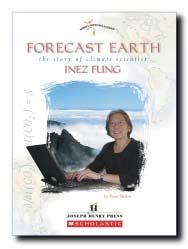
The goal of the series is to provide strong female role models for middle school-aged girls who are interested in science.But Fung hopes the books will encourage both girls and boys to pursue their passions,without worrying about what other people think.
“If someone tells me I’m not normal,that’s great,”says Fung.“Because normal means average,and I don’t want to be average.I want to be special.And that’s the message I want to get across to the young people: that they should be special.”
Briefs
Forecast Earth is available in select bookstores and online.
—Catherine Price
It’s the Cheese
Allison Clark has been a vegetarian since she was eight years old.But despi te occasionally dabbling with a dairy-free diet,this ‘05 Nutrition graduate has never been able to commit to veganism.Why? Because of cheese.
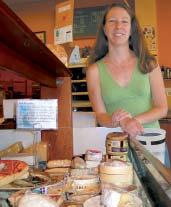
“I’m slightly cheese-obsessed,”admits Clark,who professes her love for chevre and the occasional sheep brie.It’s a taste she’s been developing over the past few years, ever since she worked on an oral history project about farmers markets in the Bay Area.Her frequent visits to the markets meant countless cheese samplings,which were so tasty that they sparked a deeper interest—not just in cheese as a food,but as a research subject.This resulted in her honors thesis,which examines the controversy in the United States over the safety of raw milk cheeses.
Raw milk cheese (that is,cheese made with unpasteurized milk) is illegal in the United States unless it has been aged for at least 60 days.This “60-day rule”is supposed to age cheese enough to kill harmful pathogens related to food-borne illness. But as Clark points out, new pathogens have emerged that can survive in cheese for longer than 60 days.More importantly,Clark’s research indicates today’s cheese manufacturing is so sophisticated and clean that even young raw cheeses can be made safely.In her paper,Clark suggests that the United States adopt a system similar to that of France,where certain small cheese companies are allowed to produce raw milk cheese,provided that they comply with strict sanitation requirements. Why is raw milk cheese such a big deal? Basically,because it tastes so good.
“There’s plenty of good pasteurized cheese,”says Clark,“but if you taste pasteurized and unpasteurized cheese side by side,they’re very different. Raw milk cheeses usually have a stronger taste and more interesting subtleties in flavor,because there are all these other unknown bacteria in there that are doing their own little interesting fermentations.” While there aren’t many nutritional advantages to eating raw milk cheese, Clark says that research has demonstrated that cheese made from unpasteurized milk can actually do good things for the body: it’s high in certain types of probiotics (that is,beneficial bacteria) that might be good for the gut.
Despite a lack of compelling nutritional motivation,Clark will still eat cheese, whether it’s made from raw or pastueurized milk.“I just haven’t been able to find a reasonable replacement,”she says.“I really like cheese.”
| BREAKTHROUGHS FALL 2005 6
—Catherine Price
Allison Clark,‘05 surveys the objects of her affection at Berkeley’s famed Cheeseboard.
Cyril Manning
Boot Camp for Young Geneticists

Could you explain DNA’s role within a cell to a classroom of third graders? Isolate strawberry DNA? Create a polymerase chain reaction that screens for differences among potato species? Alexis Cavallaro and Paula Pereira can,and they’re still in high school. For six intense weeks this summer,the girls worked at Albany’s Plant Gene Expression Center in the genomics lab of Associate Professor Barbara Baker.They learned to extract and analyze plant DNA,set up their own experiments,and delved into bioinformatics.They taught young students and their own peers about DNA,and even traveled to Rockville,Md.,to visit the Institute for Genomic Research.
As part of the program,every member of Baker’s lab developed presentations for the teens.It’s a process that the program’s outreach director Meghan Flanagan says forces researchers to hone their skills at explaining their work to audiences of all levels.
Unlike in the past,this year Flanagan sought out students without a lot of academic support.“Our students in previous years were great,but they were already on the college track and probably would have had the opportunity to do research as undergraduates,”she says.“I wanted to find students who didn’t necessarily have all those opportunities,who were passionate about science,and for whom the experience could open some doors.”
She found just the right students in Pereira,who hopes to become a veterinarian,and Cavallaro,whose goal is to conduct genetic research on skin disorders such as lamellar icthyosis,a condition from which she herself suffers.While both girls had a steep learning curve going into the program,Flanagan says,“They had the opportunity to perform real genetics research,and it’s safe to say that both of them really get it.”
—Cyril Manning National Science Foundation funding for the Center for Plant Genomics Training and Education will expire this year.For information on helping to sustain the program, contact Alex Evans at (510) 643-9903.
Briefs
Reaching Out: Alumni “Adopt” Community Colleges
Tad Mason, past president of the Cal Alumni Foresters, didn’t spend four years at Cal; he transferred to CNR from the College of the Siskiyous. Now he’s working to encourage today’s ambitious community college students to come to Cal as junior transfers,as he did in 1977,and he’s recruiting other alumni to help.
“I thought it would make a lot of sense for alumni living in other parts of California to approach community colleges,get to know the forestry instructors and counselors,and remind them that there’s a forestry programat Cal that is robust and world-class,”Mason said.With help from Assistant Dean Monica Lin and Associate Dean Lynn Huntsinger,Mason founded the Cal Alumni Foresters’Adopt a Community College Program.Started in the fall of 2004,the program matches up a dozen forestry alumni volunteers with community colleges throughout California.Each volunteer adopts a college,comes in to visit with students,tells them about CNR’s forestry and natural resources programs, and answers their questions about forestry careers.
The response so far has been enthusiastic; in fact,the College of the Siskiyous is so excited about the program that it is considering ways to dovetail its forestry
curriculum with CNR’s so transfer students can make a smooth transition.
“Foresters aren’t the only ones who can benefit from this type of outreach,”said Lin,who leads many of CNR’s recruiting efforts. “Alumni from any of our majors are welcome to join College and campus representatives at information fairs or other events to share their experiences as CNR undergraduates.”
As vice president of forestry services at TSS Consul tant s (a leading renewable energy,natural resource management,and financial consulting firm), Mason’s goal is to give transfer students the same opportunities CNR gave him.
“My education and experiences at Cal allowed me to succeed in the rather narrow field of forestry,”says Mason.“I feel that if other students out there only knew what Cal had to offer,they could experience the same success.That’s really what I’d like to see.”
—Catherine Price
To get involved with student outreach,contact Monica Lin at (510) 643-4647 or linm@nature.berkeley.edu.
College of Natural Resources http://nature.berkeley.edu | 7
Cyril Manning
Oakland teens Alexis Cavallaro (right) and Paula Pereira perfect their polymerase chain reaction technique.
GMOs: What Constitutes Risk?

In 2003, the U.S., Canada, and Argentina filed complaints with the World Trade Organization that challenge the European Union over its moratorium on genetically modified(GM) foods and crops.The three countries complained that EU resistance to GM products violates WTO rules because the bans have not been scientifically justified.They contendthat GM products are safe—at least based on a traditional approach to risk assessment.
But last year,an international team of scholars— including David Winickoff,assistant professor of environmental science and policy management and an expert in bioethics—submitted an amicus curiae brief to the World Trade Organization urging a new characterization of risk assessment.Writing in defenseof the EU,the authors advocate that risk assessment should be based on two variables: certainty and consensus, and argue that GM technologies are both “low certainty” and “low consensus.”
The brief first argues that the biological properties and environmental and social impacts of GM foods and crops are neither well defined nor certain. Furthermore,the brief adopts a tenet of Winickoff’s scholarship: that there are cross-national differences in public values that are relevant not only to the management of hazards,but also to the initial definition of hazards.“Part of my work is trying to find ways that will facilitate democratic control and decision making, rather than simply giving technocratic control without accountability,” Winickoff says.
In other words, if the public finds the idea of GM crops and food unsettling,as many Europeans clearly do, their view of the technology as hazardous should be respected.“In light of ...the important role of public confidence in regulating new food technologies,”write the brief’s authors,“the alleged European moratorium should not be deemed an ‘undue delay.’”
At Breakthroughs press time,the WTO dispute resolution panel had not issued a decision on the matter.
—Cyril Manning
For more information on Winickoff’s scholarship on this issue,see his Yale Journal of International Law paper “Adjudicating the GM Food Wars: Science, Risk,and Democracy in World Trade Law”at http://nature.berkeley.edu/breakthroughs/gmfoodwars.
Policing Crop Politics
Any driver knows that if you make a habit of rolling through stop signs and careening down the highway,the points on your driver’s license will soon send the cost of your car insurance through the roof.That’s because,according to your pattern of behavior,you’re statistically more likely than other drivers to cause an accident and need an expensive insurance payout.
Jeffrey LaFrance,professor of agricultural and resource economics and policy,thinks similar logic should apply to crop insurance—policies that can guarantee farmers a certain income even in the case of crop failure. Unfortunately for taxpayers,that’s not the case.LaFrance,who evaluates policies for the USDA’s Federal Crop Insurance Corporation,doesn’t have kind words for many of the proposals that come across his desk.“I sometimes use words like ‘ridiculous,’‘egregious,’‘terrible,’and ‘awful,‘“ LaFrance says,describing his reports.
Crop insurance is a big issue,thanks in part to the Agricultural Risk Protection Act of 2000.That law mandates government-subsidized insurance products for nearly every variety of U.S.crop.All this subsidized insurance is expensive—for every dollar that a farmer pays in premiums,American taxpayers end up paying $2.40 in premium subsidies,payments to insured farmers claiming losses,and subsidies to insurance companies to sell and reinsure these products.
LaFrance’s work is controversial and often poorly received by peers at land grant universities,some of whom make a tidy sum developing for insurance companies the very policies he reviews for the federal government.(To avoid a possible conflict of interest,he never develops insurance policies of his own.)
LaFrance says a reasonable insurance product should be statistically sound,based on individual behavior (like points on a driver’s license) and observed risks (like an SUV’s tendency to roll over).But because subsidized insurance policies rely on taxpayer money,neither policyholders nor insurance companies internalize the risks of agricultural production.Compounding this basic flaw is the fact that badly designed policies encourage risky farming practices (for example,gambling on unreliable crops or cultivating a steep grade) and can be an open invitation to fraud.If a crop is on track to make a small profit,but the farmer’s insurance guarantees an even larger return,why would the farmer invest in fertilizer and water rather than let the crop fail?
“The thing is,insurance doesn’t need to be subsidized by the government,”says LaFrance.“It’s a system that works best when premiums correlate to risks.”For now,he works diligently to stop the most wasteful policies.
“I’ve stopped a few really bad projects,”he says.“At the end of the day,my goal is to keep the costs of the federal crop insurance program as low as I can.”
—Catherine Price and Cyril Manning
| BREAKTHROUGHS FALL 2005 8
©PNC/Brand X Pictures/Getty Images
Costly Cow Condition
Briefs
Kate O’Neill, associate professor of environmental science,policy,and management,has published an article in the October-December 2005 issue of California Agriculture reviewing the economic and policy implications of mad cow disease in the U.S. Mad cow disease, or bovine spongiform encephalopathy (BSE),is a deadly brain-wasting disease that can be transmitted to humans who consume infected meat.In the 1990s,an outbreak in Britain led to the slaughter of millions of cattle,long-standing trade embargoes,and a loss of public trust in the British government.BSE subsequently turned up in 23 other countries,but in the U.S. it was long seen as a foreign threat.That changed in December 2003 with the case in Washington State that made “mad cow”a household term.
The American taste for beef proved resilient.But U.S. trading partners—particularly Japan and Mexico— have a very low-risk acceptance threshold,so even a contained incident can have far-ranging consequences. The 2003 case set into motion a series of new BSE protections from the USDAand FDA—policies that remain heavily contested by the beef industry,which must bear the $200 million price tag.
Last summer,a second U.S.case of BSE turned up,this time in Texas,and O’Neill cites experts who predict that more cases are highly likely.“Two dead cows may seem insignificant given the size of the U.S.cattle industry,but they have come to represent some of the potentially serious risks associated with large scale industrialized agriculture,”says O’Neill.With uncertainties over consumer confidence and export markets in such an event,she writes,“U.S. regulatory authorities are facing some tough decisions about risk mitigation and communication in the face of high economic stakes.”
—Cyril Manning
Seedlings of Success
Just weeks before graduating last spring, Sophak Peou (lef t) and Erica Meta Smith,along with other volunteers from the Cal Forestry Club and the community, planted 1,100 redwood seedlings in and near Oakland’s Claremont Canyon.It was the last stage of a two-year campus project to remove fire-prone,non-native species such as eucalyptus,Monterey pine,and acacia,and replace them with fire-resistant native species. Al though Smith was left with a nasty case of poison oak,she says it was worth it “to know that future generations will be able to go up there and enjoy these beautiful redwoods,just as I enjoy going to the UC Botanical Gardens or Founders’Grove.”

Enter CNR’s First-Ever Essay Contest
Share your knack for spinning stories with fellow alumnion the pages of this magazine—enter Breakthroughs’first annual essay contest! We’ll publish one winning entry in the spring 2006 issue and award the author with a new 60GB iPod.

GUIDELINES
Theme: “Unexpected Lessons”
Length: 500 to 1,000 words
Format: Any prose is welcome,and may be submitted as typed,double-spaced hard copy,or via e-mail with your submission in the body of the message.
Deadline: December 1,2005
E-mail: breakthroughs@nature.berkeley.edu
(No HTMLmessages or attachments,please.)
Postal mail: Breakthroughs Editor
College of Natural Resources
University of California Berkeley
101Giannini Hall,#3100
Berkeley,CA9 472 0-3100
The winner will be the one judged (by the Breakthroughs staf f) as the entry most likely to capture the interest of the readers of this magazine—14,00 0 alumni and friends of the College of Natural Resources and its predecessors, the School of Forestry and the College of Agriculture.College and Cal-related reflections are welcome,but not required.
College of Natural Resources http://nature.berkeley.edu | 9
Genevieve Shiffrar
New Faculty
Three new assistant professors, all experts in biodiversity, joined the faculty earlier this year. Claire Kremen, formerly of Princeton University,is a conservation biologist. Patrick O’Grady, who joins CNR from the University of Vermont,focuses on insect evolution. Chelsea Specht, most recently a postdoctoral fellow at the Smithsonian Institution’s National Museum of Natural History,studies evolution in plants.Meet these latest additions to the CNR Community:
CLAIRE KREMEN
The term “biodiversity” is pretty loaded—what exactly are we talking about?
This word means many things to many people. An all-inclusive definition is “the genes,populations,species,habitats,and ecosystems—and their interactions—that make up the fabric of life.”Humans depend on biodiversity for their own survival, but many human activities cause loss of populations and extinction of entire species.
What ways do you try to reconcile human activities with conservation?

I work to design networks of protected reserves that will maximize the conservation of biodiversity at the lowest cost to humans. I do this work in Madagascar.I also document the relationship between biodiversity and important ecosystem services.For example,wild bee species are important pollinators of California crops,and they depend on their natural habitat.This is extremely relevant,since massive honey bee losses last year have caused shortages in the pollination services that farmers require.
What is the biggest challenge to conservation?
The big challenge is in finding socially equitable mechanisms for sustaining biodiversity,while also sustaining an acceptable standard of living for humans.This challenge is not only scientific,but also deals with defining our fundamental values.
PATRICK O’GRADY
Biodiversity is all around us. Why is it important to know how it got that way?
Understanding the conditions required to create it may give us insights into how species and habitats may be conserved in the future.
How is it possible to look back and figure out the evolutionary process?
Studying population genetics in a recently-evolved group of Hawaiian fruit flies allows us to directly test hypotheses concerning mechanisms of species formation.Another approach is to infer evolutionary histories of independent insect lineages on the Hawaiian Islands to detect similarities and differences in the tempo and mode of diversification.
Aside from the obvious lifestyle perks, why do this work in Hawaii?
Hawaiian ecosystems are especially good models for biodiversity research because they’re closed systems that have evolved in isolation over millions of years,creating a natural laboratory for evolutionary studies.But recent human disturbance and global climate change are threatening fragile Hawaiian habitats and driving many species to the brink of extinction.
CHELSEA SPECHT
What types of research questions will your lab explore?
We will focus on the evolution and diversification of plants and the use of a phylogenetic framework (that is,an understanding of the relationships between different species) to analyze how plants evolve in ways most suited to their environment.I’m particularly interested in changes that happen in response to pollinators.


Why pollinators?
Pollinators play a special role in generating biodiversity.For example,when a group of plants acquires the ability to attract hummingbirds,the plants that arise with those characteristics (nectar production and red tubular flowers) may speciate more rapidly.But the association with specific pollinators also makes them more vulnerable to habitat loss.If the hummingbird population declines,the plant population will,too.
What attracted you to Berkeley?
My research is multidisciplinary,and there is a great benefit to being surrounded by researchers with similar interests who have different expertise.There is a very open feeling to the Berkeley campus,and faculty seem eager to forge research collaborations Also,in both teaching and research,the students play a huge role in determining how much you as their teacher or mentor can learn in the process.
| BREAKTHROUGHS FALL 2005 10
Sit In on Environmental Economics and Policy 39C: Using Economics to Analyze and Debate Hot Topics
Professor Jeff Perloff’s undergraduate seminar EEP 39C explores some of the most controversial political and social topics of the day.The two-unit class fosters lively— sometimes heated—discussions on student-chosen topics that have included the economics of gay marriage,mad cow disease,digital music piracy,and even the value of human life.The catch? Students must make their case based on hard data and valid economic analysis.Occasionally,Perloff holds the same debate twice,forcing students to switch sides so they can fully understand the opposing point-of-view.
Syllabus
would drop by about 1.4 percent—a barely noticeable 33 cents per barrel.
Case Study One topic that was popular in Perloff’s class last semester focused on drilling in the Arctic National Wildlife Refuge. Should ANWR continue in its undeveloped state, or should it be opened for oil drilling? Proponents argue that extracting this oil would substantially reduce the price of petroleum and decrease U.S. dependence on foreign oil. Opponents, on the other hand, claim that drilling will harm the environment, and some maintain that pushing down the price of fuel at the pump would increase consumption and, therefore, pollution.
Through their research and calculations, the students found that ANWR could eventually produce about 800,000 barrels of oil per day, increasing the volume of oil on the global market by about 0.7 percent by 2020. Then they calculated the effect the extra oil would have on future prices.
Because the overall oil output from ANWR would be a very small portion of the worldwide market, the new supply curve (S2, on the blackboard above) would be only a hair to the right of the existing supply (S1). What exactly does that mean? The cost of oil

Students analyzing the ANWR debate ended up questioning the predictions of both friends and foes of drilling. ANWR oil won’t reduce the world price of oil by much, their analysis showed, so it won’t insulate the American market from world events. And with prices that would only translate to three or four cents at the pump, prices wouldn’t noticeably affect U.S. driving habits, either. Says Emily Giles, a student in last year’s class: “Topics such as ANWR and junk food in schools as it relates to obesity would not have been discussed in any of my other economics courses.” Giles, who now works for a financial management company that helps cities in fiscal crisis, also says that Perloff’s guidance helped her “learn what questions to ask when presented with facts and figures.” “A course like this is important because it shows how invalid arguments get misused as facts when people don’t understand basic economics,” says Perloff. “For example, politicians love to say that supply equals demand. But that simply isn’t true in our t ype of economy.”
Does economics influence your perspective on the ANWR debate? Answer our poll on the enclosed reply card. The first 50 responses we receive will be entered to win a free copy of Freakonomics: A Rogue Economist Explores the Hidden Side of Everything, by Steven D. Levitt and Stephen J. Dubner.
College of Natural Resources http://nature.berkeley.edu | 11
PhotoDisc
Since its inception, Breakthroughs has been dedicated to keeping alumni and friends up to date with research, outreach, and teaching news. With this issue, we’re trying something new—broadening our focus to discuss important natural resources issues beyond the College walls. Let us know what you think—write to the editor at breakthroughs@nature.berkeley.edu.
State of
By Carol Hunter
Photographs by Genevieve Shiffrar
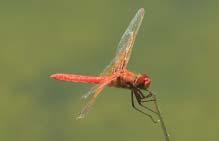
OOn the surface, the Sacramento-San Joaquin Delta looks a lot like paradise. One thousand miles of navigable sloughs and waterways provide the perfect diversion for boaters and anglers, rich Delta peat on the more than 50 man-made islands grows a cornucopia of crops, and historic Delta towns provide visitors with a rural escape. But Delta waters are also at the heart of a three-decade conflict that has pitted environmental, agricultural, and urban water needs against each other.
The Delta is the terminus of an enormous watershed that stretches from the Cascades to the Tehachapi and from the Sierra to the sea. Historically, 40 percent of the state’s fresh water has converged at this ecological crossroads to mix with seawater from San Francisco Bay. This estuary, the largest on the West Coast, is home to 130 species of fish, including80
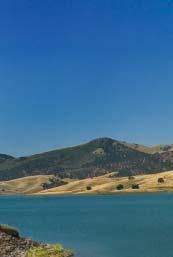
| BREAKTHROUGHS FALL 2005 12
Editor’s note:
W hen it comes to Delta water,balancing the needs of cities, a griculture,and the environment is no easy task
percent of the state’s commercial fish species, and is an important resting place for migratory waterfowl.
But Delta water is also the lifeblood of the California economy. It irrigates more than 4 million acres of vibrantly productive farmland and contributes to the drinking water supplies of two-thirds of the state’s residents. A complex system of reservoirs, pumps, pipes, and aqueducts store and divert more than 60 percent of Delta water from its natural seaward journey to cities and farms miles away.


Many diverse groups have a stake in how Delta waters are allocated, from fishermen and farmers to environmentalists and urban consumers. The resource is managed by a maze of regional, state, and federal regulatory agencies, all consolidated under the California Bay-Delta Authority, or CALFED. All of the players hope to find some way to balance the competing water needs of cities, agriculture, and the environment.
“It’s hard to say what would happen if CALFED wasn’t here,” says David Sunding, professor of agricultural and resource eco-
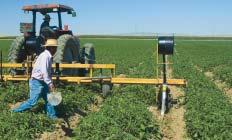
nomics and a nationally recognized authority on water allocation. “The optimists among us believe that a rising tide of cooperation can lift all boats. Let’s hope that’s true, because if we can’t strike a balance we’ll be warring over water for years to come.”
OOn a perfect day in late May, Ben Ewing, a young scientific aide from the California Department of Fish and Game, scoops up a tiny fish in a small green net and holds the specimen next to a ruler. It is
College of Natural Resources http://nature.berkeley.edu | 13
a juvenile fall-run Chinook salmon. He calls out its length, weight, and age to a colleague, who jots down the information; then Ewing scoops up another fish to repeat the procedure. It’s an ongoing process that is crucial to determining the timing and size of four distinct salmon runs as juvenile fish emigrate through the Delta.
these rivers in the mid-1900s, the salmon habitat started to shrink. Today, on nine of the 10 major tributaries in the Delta watershed, huge storage dams block about 80 percent of the fish’s historic spawning habitat. Downstream diversions are also dangerous, sucking eggs and emigrating juveniles into giant pumps. As a result of these pres-
Often, 2,000 to 3,000 young salmon are counted as they pass through giant funnels that rotate with the river current. But this late in the season, the crew catches just 19 fish. The number may not sound like much, but even fewer than this can have a dramatic impact on water resources across the state. The giant pumps that send water to Southern California can be shut down if they take in more than 2 percent of an endangered run. Sometimes, that 2 percent can mean as few as a dozen fish.
At one time, it would have been almost impossible to count the number of juvenile salmon migrating through the Delta. Historically, both the Sacramento and San Joaquin Rivers supported four healthy runs of Chinook, comprising hundreds of thousands of fish. The adults traveled far upstream into the mountains to spawn in the dense gravel beds.
But as large water projects began encroaching on
sures, both the winter-run and spring-run Chinook salmon, as well as the endemic Delta smelt, are listed under the Endangered Species Act.
Steps are being taken to help restore these threatened and endangered fish populations, many of them funded by CALFED. “The program has improved a lot in the last five years,” says Matt Kondolf, associate professor of landscape architecture and geography at UC Berkeley and a member of the CALFED’s Scientific Advisory Board. “They are doing a good job integrating science into their decisions and monitoring.” He cites several restoration projects on Delta tributaries like Butte Creek and Clear Creek, where dams have been removed or fish ladders installed, allowing salmon accessto previously blocked spawning grounds.
More water has also been set aside for conservation needs. Fish screens have been installed on the big water

| BREAKTHROUGHS FALL 2005
14
project pumps, and the 1992 federal Central Valley Project Improvement Act allocated an extra 800,000 acre-feet of water each year to the environment. CALFED also set up the Environmental Water Account, a system to better manage stream flows to protect fish
full understanding of how the ecosystem works. We’ve so changed the physical infrastructure that we can’t go back to how it was. Our real challenge is, given the big changes we’ve imposed on the system, how can we restore and preserve some of
without affecting pumping operations. Research like the Department of Fish and Game’s salmon surveys lets water managers know when the endangered fish are passing the south-Delta pumps, allowing them to try to divert the fish or, as a last resort, shut down the pumps while the fish make their way.
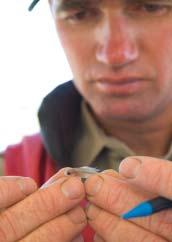

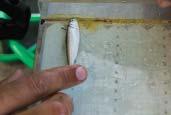

But the ecosystem is complex, and it can be difficult to determine how each action affects the endangered fish. “The agricultural and urban communities want us to tell them, with engineering precision, how much water we need [for environment al conservation], and we do our best,” says Peter Vorster, a hydrologist with the nonprofit Bay Institute. “But we don’t have a
the ecosystem’s original functionality?”
Salmon populations do seem to be improving, but it’s hard to know exactly why. “It’s a little bit like comparing apples and oranges,” says Rob Titus, senior environmental scientist with Fish and Game. He says that it’s hard to know if the improvements to the fish stock are due to changes in restoration and water management or simply part of a natural cycle. And even though the salmon stocks are improving, they are hardly out of jeopardy. “Even the levels we’re seeing now are much lower than what we’ve seen historically,” he says. “While we’re encouraged by increases in recent years, we’re not overly optimistic that the fish population is recovering.”
College of Natural Resources http://nature.berkeley.edu | 15
On nine of the 10 major tributaries in the Delta watershed, huge storage dams block about 80 percent of the fish’s historic spawning habitat.
Turbine-like collectors on the Bay Delta (facing page) allow the California Department of Fish and Game to monitor population levels of salmon and other fish species. Above,Fish and Game scientist Ben Ewing identifies a fish from the traps.
MMore water for environmental needs, however, means less water flowing through the Tracy Pumping Plant and southward down the Delta-Mendota Canal to San Joaquin farmers like Stuart Woolf. Woolf has a large family farm nestled against the Coalinga Foothills in Fresno County, where he grows acres of nut trees,

the Westlands Water District negotiated its first contract with the federal government to receive water from the Delta, and by 1968 Delta water was flowing to thirsty crops on hundreds of Westlands farms. Today, Westlands has a contract for 1.15 million acre-feet of water per year. (One acre-foot equals nearly 326,000 gallons, or enough water to meet the needs of an average California family for two years.)
The largest federal water district in the United States, Westlands encompasses more than 600,000 acres of farmland and supports a community of more than 50,000 people. The federal contract promises plenty of water for these family farms, but drought conditions and environmental regulations north in the Delta have restricted supply. These days, farmers can only expect to receive 60 to 70 percent of their contracted water.
cotton, wine grapes, canning tomatoes, and wheat.
Central Valley farms like Woolf’s are some of the most productive in the world, accounting for about 45 percent of the fruits and vegetables grown in the United States. The region boasts deep, sandy loam soils that are incredibly productive, and a natural greenhouse effect provides a warm, stable climate for crops. It is far enough north for nut trees to go dormant during the winter, but the long, hot, dry summers are ideally suited for a long processing season. In short,farmers like Woolf have every natural advantage they could possibly desire, except for one critical resource: water.
The region around Woolf’s farm was once known as the uninhabitable Great California Desert. But in 1963,
All Central Valley farmers that get water from the Delta are suffering, but farmers in Westlands have been hit especially hard, says Blake Sanden, an irrigation and agronomy farm advisor with UC Cooperative Extension. Unlike many other Central Valley regions, Westlands does not have much groundwater to turn to as an alternate water source. “In terms of impact on valley farmers, Westlands is the poster child for bad news,” Sanden says. “The price of water has gone up the most, while the dependability of supply has gone down the most.”
For Woolf, that puts water resource management at the top of his agenda. Although the district tries to let the farmers know how much water they can expect, it’s usually too late in the season to do much good. “You don’t usually know what you have until you’ve planted most of your crops,” says Woolf. “As a grower trying to figure out what to plant and how much, it’s difficult to manage that risk.”
| BREAKTHROUGHS FALL 2005 16
“Our limiting factor is not land or capital, it’s the water supply. We run our farm budgets based on water availability.”
Above,Central Valley farm operator Stuart Woolf tends to the irrigation system that nurtures his almond seedlings.Woolf has adopted practices and technology that make the most ef ficient use of his water allotment.
That’s partly because some of the most water-intensive crops are also the most lucrative. For example, almond trees use about 70 percent more water, but with a red-hot almond market, Woolf says that the return per acre-foot of water is higher for almonds than for tomatoes. But orchards of almond trees are a long-term

him to manage water resources as efficiently as possible. During dry years, he also uses the marketplace to buy supplemental water, which has become a hot commodity as supplies from the Delta plummet. “We’ve changed our farming practices so we can get by with fewer drops of water,” says Woolf. “Our limiting factor is
investment. Woolf needs to have enough water to keep those thirsty trees alive for their 20 to 30 years of productive life. Woolf also has invested capital in several processing plants for his almonds, tomatoes, and cotton. If these plants aren’t running at capacity, he is losing money. “By virtue of not having better information on the reliability and cost of water,” he explains, “we don’t maximize our decisions.”
Like many farmers in the Westlands Water District, Woolf has invested in technology to use his water more efficiently, like laser-leveling his fields and installing more than 10,000 acres of drip irrigation. He uses GPS-guided equipment to make fewer and more accurate passes through fields, and soil moisture technology that allows
not land or capital, it’s the water supply. We run our farm budgets based on water availability.”
So far, Woolf has been able to get by. “For most of the valley, people on prime farmland are still getting the water they need by hook or by crook,” says UC Extension’s Sanden. “What Delta issues mean to farmers down here is an increased cost of doing business, but if we get back into a multi-year drought, we’ll be hurting.”
Woolf is doing what he can with limited water supplies, and there may be a trace of bitterness in his voice. “I just think we should be holding all users to the same level of accountability as agriculture,” says Woolf. “I’m very pro-environment—I work with the environment every day. But there’s no endangered species act for
College of Natural Resources http://nature.berkeley.edu | 17
Fgrowers. We keep losing our most valuable resource. I just want to know that our voice is heard and that we’re seen as equal stakeholders.” Farmers aren’t the only people who depend on Delta water. More than 22 million Californians get their water from the Delta, from Bay Area cities to more than 16 million Southern California residents. Like farmers, urban water districts are also con-
cerned about a reliable water supply. But while farmers south of the Delta are mainly concerned about getting enough water for their crops, urban districts have another, equally important concern: water quality.
“From an urban perspective, this is about drinking water,” says Steve Macaulay, president of the California Urban Water Association, a non-profit devoted to urban water needs. He says that, even with California’s rapidly growing population, statistics from the state Department of Water Resources indicate that urban water use
Wa t er Issues in the Pipeline
The College of Natural Resources is home to a unique combination of scientific and policy expertise when it comes to water issues,and David Sunding,professor of agricultural and resource economics,is working to marshal these strengths to address the key water issues of the coming decades.
Sunding,an expert in environmental economics,wetlands,and water resources, predicts that water issues will be among the biggest challenges to the environment and the economy in coming years.“Nobody wants water to be the limiting factor of growth,”he said.“At the same time,there’s a growing social recognition that we need to care for the environment.”He believes CNR expertise can lead the way in meeting these dual needs with creative solutions such as water trading,innovative pricing arrangements,alternative storage solutions,and advances in reclamation and reuse.
For Sunding,the three most crucial areas are:
Urban water issues, including procuring reliable water supplies,long distance conveyance,treatment and distribution,infrastructure finance,water recycling,and non-source-point pollution (pollution from diffuse sources carried by rainfall and snowmelt).“What combination of policy-level strategies will make cities more livable?”Sunding asks.“What are the trade-offs for different levels of wastewater treatment?”
Wetlands protection and water quality. “There are crucial legal and policy questions around wetlands and endangered species that have yet to be answered,”says Sunding.“In some places, like the Bay Delta,we’ve messed up the ecosystem so badly that we don’t know how to use it anymore.”
Water allocation, as agriculture,urban,and exurban users place increasing demands on California’s limited water supply.“This is one of the most critical,and potentially one of the most divisive, issues facing the state,”Sunding says.“However,when it comes down to it,we don’t have a scarcity crisis.We have a management crisis,and we’re in need of some creative institutionbuilding to better allocate what we have.”
—Cyril Manning

To learn more about UCBerkeley’s leadership role in addressing crucial water-related issues,visit http://nature.berkeley.edu/breakthroughs/water.
hasn’t increased much over the last 20 years, mostly due to conservation. “Quantity has been the big factor for decades, but quality is becoming an increasing factor.” That’s because more freshwater diversions mean more saltwater intrusion. “For many urban water agencies, quality is the first thing they think of, and the quality in the Delta is not getting better,” says Macaulay.
This is especially true for the Contra Costa Water District. One of the largest urban districts in the state, CCWD serves around 500,000 customers. And while most other California water districts have multiple water sources such as the Colorado River, groundwater, and local surface water, CCWD is completely dependent on the Delta. Until 1998, the district had no way to store their water, so whatever the quality of the water in the Delta at any given moment was also the quality of the water in customers’ pipes.
Quality standards for raw Delta water are extremely low because they are based on the needs of fish, farmers, and industry— for example, how salty the water can be before corn won’t grow.If the quality in the Delta drops below these low thresholds, water managers are required to release fresh water from the upstream reservoirs to dilute the salt. But standards don’t really exist for drinking water.
“You can call it the gag rule,” says Greg Gartrell, assistant manager at CCWD. “The water can’t be worse than 250 mg of chloride per liter. You can start tasting salt at about 100 mg of chloride per liter; at 250 mg per liter, people just stop drinking it.”
| BREAKTHROUGHS FALL 2005 18
“Call it the gag rule. You can start tasting salt at about 100 mg of chloride per liter; at 250 mg per liter, people just stop drinking it.”
Low quality raw water also requires more chemicals to process at the treatment plant, and bromide from the ocean can react with water treatment chemicals to form dangerous compounds like bromate, a suspected carcinogen. Instead of using the federal pumping plant in Tracy, CCWD diverts Delta water through its own intake pipes farther west, closer to the San Francisco Bay. Today, water from the district’s original pipe in Mallard Slough on the coast of Suisun Bay is almost always too salty to drink. The district has built two additional pipes further upstream, but even there, the water quality is often poor. They needed a solution that would let them capture high-quality winter and spring water and store it for the summer months when saltwater intrusion became an issue. They found the answer in a valley, a dam, and a reservoir.
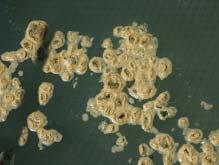

Rising water-quality standards add another layer of complexity to the competing demands for Delta water. “It’s going to increase the conflict,” says Gartrell. “It’s really a three way conflict: water for the environment, water for human use, and water quality for both. It’s not just cleaner water. We’re talking about the amount of water that’s available for everybody.”

—Carol Hunter is a freelance writer in Half Moon Bay, Calif.
LLos Vaqueros Reservoir sits high in the golden grassy slopes south of Brentwood. Completed in 1998, the large earthen dam holds back 100,000 acre-feet of water, enough to provide for 200,000 families for an entire year. On a clear May day, the lake is slowly filling with water sucked from the Delta’s spring current, high quality water that will flow from district faucets in the dry summer months ahead.
Los Vaqueros shows how important the water quality issue is becoming to urban districts. It took about 10 years and $450 million to purchase the 20,000 acres protecting the Los Vaqueros watershed and construct the dam, yet the district does not get a single additional drop of water from the project. “That project, which has a zero increase in water supply for Contra Costa, was financed by voters strictly for water quality,” says Macaulay. It’s a trend he expects to see more of in the future. “You cannot talk about water supply reliability without thinking about how quality fits in.”
When diversions for agricultural and other uses reduce water levels on the Delta,water quality for human use declines. The Contra Costa Water District,supplied entirely by the Delta,stores water at the Los Vaqueros Reservoir (above; also on page 12-13,top) for use when quality falls short. The stored water is chemically treated (left) to provide high-quality drinking water to the district’s urban customers.
College of Natural Resources http://nature.berkeley.edu | 19
Chain Reaction
Tracing the impact of globalization from the factory
 By Nathanael Johnson
By Nathanael Johnson
TThe factory was quiet. For months, Dara O’Rourke had been tracking university sweatshirts back to their point of origin. In 1998, the search led him to a factory in Shanghai, China, where he’d hoped to interview workers and inspect conditions. But when he arrived, the factory, which had been churning out shirts not long before, was silent. Thousands of miles away, the U.S. government had just changed its tariff structure. American financial managers and sourcing agents raced to their computers, and their keystrokes sent ripples out into the global economic ether, lifting garmentmaking contracts out of China with the blink of a cursor. Soon after, factory bosses delivered the news to workers, as well as to O’Rourke: the orders had gone to Pakistan.
As the world’s markets become increasingly fluid, factory orders can move half a world away instantaneously. This provides the world with lower cost goods and brings money to developing countries. But it also has brought environmental, health, and safety problems to some of the poorest and
| BREAKTHROUGHS FALL 2005 20
Photographs by Dara O’Rourke
floor to the corporate board room
most poorly regulated parts of the world.
An assistant professor in the Department of Environmental Science, Policy, and Management, O’Rourke is looking for practical ways to produce goods in these global supply chains while actually improving conditions for workers, communities, and the environment. To do this he travels the world, from the top to the bottom of these production systems, in search of strategies for preventing pollution and workplace problems. From the corporate headquarters of global brands and retailers to some of the most polluted and hazardous industrial zones in the world, O’Rourke says he “seeks to empirically study the networks that produce the products we love to consume.” Gathering this data allows him to analyze the root causes of problems in these systems and to design prevention strategies to prevent labor and environmental problems that they can create.
This research has landed O’Rourke in the middle of academic and activist battles about globalization, regulation, and the future of production. But O’Rourke is well suited for these stormy waters—in large part because he is willing to spend time in third-world
factories, yet still talks in terms of “production networks” and “strategic monitoring systems,” the depoliticized language of the corporation. His research has even convinced companies like Nike to pressure manufacturers to make improvements in their factories around the world.
Most recently, his research brought him to El Salvador, where only a few years ago the country was booming with new factories manufacturing t-shirts for the U.S. market. Today, O’Rourke says, with changes in global trade rules, Chinese factories are out-competing El Salvador’s, forcing many factories in the tiny Central American nation to close. In this competitive environment, finding ways to improve the lives of workers or to prevent pollution has hardly been the first thing on the minds of the captains of industry.
Yet the owners of one factory near San Salvador have taken O’Rourke up on his vision of improving conditions while simultaneously improving the factory’s productivity. This vision to redesign manufacturing processes to both be more efficient and more environmentally and socially sound is critical for any alternative to the so-called
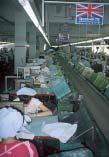
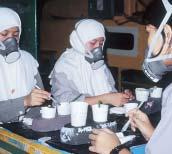
“race to the bottom”—the deterioration of conditions that accompanies the persistent lowering of production prices. O’Rourke visits El Salvador two to three times a year and has meetings via conference call with the managers of the factory every few weeks. He worked with them to totally revise their pay and incentive system, with a goal of reducing their work hours from 60 to 40 per week without reducing their wages.He also guided them through a number of technical changes that reduced ergonomic and other health hazards in the factory.
O’Rourke became well known in 1997 after his report on environmental and health conditions in Vietnamese shoe factories helped spur consumer protests against Nike. Given this history, some might be surprised by O’Rourke’s current relationship with garment makers, but he says he can
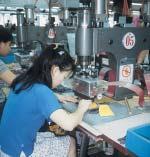
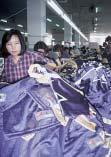
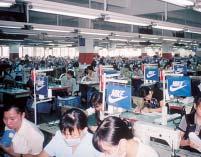
College of Natural Resources http://nature.berkeley.edu | 21
make a bigger impact by advising the firms that drive these industries than he can by simply exposing problems in their supply chains. In exchange for helping them rigorously analyze their operations (and often improve their efficiency), O’Rourke demands greater transparency from the manufacturer and a real commitment to problem solving.
The Salvadoran factory owners, for example, provide access to their records— an assistant verifies these records and sends the electronic files to California. In his

Law School). “We can now track hour by hour exactly what happens when an order from a global brand flows through the plant. We can track when overtime goes up to meet a delivery schedule. We can see if accidents go up as workers work late to meet those delivery times.”
This kind of analysis helps O’Rourke identify root causes of problems in global supply chains and generate hypotheses about what might be done to prevent those problems.
O’Rourke knows he can only do so much working with individual factories. The real potential for change comes not in reforming individual plants, he says, but in reforming the corporations at the top of the chain— the brands that consumers recognize thousands of miles from factory floors. That’s why he is increasingly focused on developing metrics and methods that can be applied across global production networks.
Berkeley office, O’Rourke flips on the enormous screen of his Mac and opens a spreadsheet that fills the entire monitor. He scrolls down, pointing out pertinent information from factory time clocks, wage reports, productivity data, and clinic visits. “There were 33 people in this work group,” he says. “They were making Nike Brazil Soccer jerseys. And between 7:15 and 8:15, they produced 60 units.” But more importantly, he then hones in on some of the surprises of his research (which he is conducting in collaboration with Chuck Sabel of Columbia
And while this research provides rich data for academic analysis, it also informs public debate about sweatshops, globalization, and the environment. For instance, while international organizations and corporate monitors have increasingly tried to police sweatshop labor, many factory managers have perfected methods of hiding poor conditions. O’Rourke’s research seeks to move beyond current checklist auditing of factories towards more systematic and strategic monitoring systems.

Influencing global brands and retailers requires different tactics than influencing factories. Brands have succeeded in distancing themselves from environmental and human rights issues; instead, their focus is psychological merchandise: the images and feelings consumers associate with their wares. But because the brands are so concerned with perception, they can be susceptible to public pressure to do the right thing.
The feelings that brands artfully connect with their products can often dissolve when activists—or professors—show the very real connections between a product and the conditions under which it’s made. But
| BREAKTHROUGHS FALL 2005
22
O’Rourke’s research is far from a moral crusade; instead, it uses root-cause analysis to improve efficiency, communication, and logistics. “I realized I was never going to get very far if all I did was bust midlevel factory managers for making people work long hours,” he says. “Now I can look up and down the supply chain to figure out what’s really going on.
“We can see, for example, if Nike or some other company has told the factory manager, ‘We need 20,000 units in 21 days, and if you can’t do it we’ll go somewhere that can.’ To use another example, we can see if a delay at the docks is a part of the problem, or if it’s some other logistical issue. The more we understand about how the system works, the more solutions we can come up with.”
There is much speculation about the economic impacts of globalization, but it often misses the very real, human-level connections—where consumer trends in the United States can mean layoffs in Central America and a simple change in tariff laws can suck jobs out of China and deposit them in Pakistan. It’s easy for proponents of globalization to ignore such connections with the conviction that rising waters will lift all boats. And it’s equally easy for opponents to denounce globalization as bad for workers. But O’Rourke has found that easy answers are not enough.
“In part I’m working to empirically document the real impacts—both positive and negative—of global production,” O’Rourke says. “But I’m also working to explore alternative systems that can benefit workers, communities, the environment, and maybe even consumers back here in Berkeley.”
Studying Environmental Justice,First-Hand

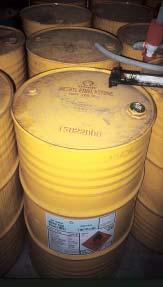
Last fall,undergrads Vivian Choi and Kathleen Rubio spent months looking at disparities in shoreline access for high- and low-income communities. Their classmates,Nina Rizzo and Charles Kirubi,helped open-space advocates in North Richmond explore locals’attitudes toward an endangered wetland.And sophomore Talia Levitan led a team in puzzling out what to do when restoration efforts bump up against homeless streamside dwellers.
Assistant Professor Dara O’Rourke was the agent of these out-of-classroom experiences.O’Rourke arranged for students in his environmental justice course to work with nonprofit organizations on such issues as seafood contamination in poor and minority communities,female farmworkers’views on pesticide handling and exposure,and the ecological impact of prisons.O’Rourke recently received the prestigious Chancellor’s Award for Service Learning for his work with the students. Levitan found social justice issues cropping up even in environmentalists’efforts at stream beautification.Her project for a group dedicated to restoring East Bay creek areas was to recommend protocols for dealing fairly with homeless people—an issue that arose when volunteers encountered a homeless encampment at Albany Waterfront Park .“I never thought there could be a connection between water restoration and homelessness,”she says.
“When we would talk to homeless people or homeless-advocacy groups,usually they would be really adamant about telling us this is their space and creek restorationists shouldn’t intrude,”she says.“And we’d have the complete opposite response from restoration organizations,who would say [the homeless group] is not [their] responsibility [and] the most important issue is the environment.”
To O’Rourke,the displacement of homeless people locally carries echoes of the developing world, where illegal squatter settlements are often threatened by conservation efforts."I think for a long time the environmental movement thought, all right, kick ‘em out,close it off,put a fence around it," he explains."Turns out it doesn’t work. If you don’t deal with economic-survival and selfsufficiency issues,they just come back,and it may be worse than it was before."
—Barry Bergman
College of Natural Resources http://nature.berkeley.edu | 23
—Nathanael Johnson is a freelance writer and a producer for the public radio show KALW News.
N ani’s ForestSchool

Teaching the Women Farmers of a Remote Javanese Village
Written
FFriday prayers have just finished resonating from the loudspeakers in the remote Indonesian village of Malasari. Veiled women file lethargically out of the Mosque and down the dirt road toward their homes for the day of rest.
But before they arrive, the speakers summon them to convene for a different sort of enlightenment.
“Attention, women. Quickly come to the main road. Ms. Nani is here and her Forest School is starting.”
| BREAKTHROUGHS FALL 2005
24
and photographed by Adam B. Ellick
Nani Septariani,right,delivers a lesson in farming practices in Malasari,Indonesia.
Soon, Nani and about three dozen women hike up a hill and settle on the grass. Nani introduces the day’s lesson: “How to increase your farming income.”

Nani Saptariani is a feisty and inexorable conservationist who often sounds more like a social worker. Since 1997, she has made weekly Friday treks to the Halimun Ecosystem area, the largest tract of true rainforest remaining on Java, the world’s most populous island. Her mission is to teach best farming practices and empower the people of this stunning, biodiverse mountain region, where the residents’ livelihoods are endangered by gold mining, tea plantations, logging, threatened water catchments, and worse yet, a bullying and corrupt government known for stripping local farmers of the land access they require.
To develop the skills she needs to tackle this monumental challenge, Nani spent the summer of 2004 at the College of Natural Resources’ Beahrs Environmental Leadership Program, a unique course in sustainable environmental management for mid-career professionals from around the world. The course, she says, revolutionized her leadership skills from “a plain, black-andwhite approach into a strong confidence that empowers people.”
During office days, Nani lobbies the gov-
ernment on behalf of the villagers, most of whom cannot read or write. On her field visits to Halimun—a three-hour journey requiring crammed minibus transfers and a dangerous motorcycle ride—the process of empowering people is crucial.
“Nani taught us our rights and how to unite, but we’re still fighting fear and an old mindset here,” says Yati, a dedicated farmer who serves up delicious fried cassava crackers. “In 1978, the government occupied our land and we said okay. Now, we can maint ain complacency, or we can start a new generation that says ‘go to hell.’”
Halimun’s land conflicts date to 1978, when Indonesia’s then-dictator Suharto decreed that 3 million hectares (an area approximately equal to 7.5 million acres) of Javanese forest, including much of Halimun, would be controlled by the military and managed by the state forestry company. In 1992, the area was labeled a conservation forest and in 2003 it became part of a national park; but regardless of its status, chunks of the land were continually signed over to tea plantation and gold mining companies that collaborated with Suharto.
Halimun, which means “misty,” is riddled with more than 9,000 hazy and conflicting land-use regulations, a mess that allows those with vested interests in resource extraction to have leverage over any local attempt to forge a sustainable way of life. Nani is quick to share rules like “the park should have a social function to the local community,” but she concedes the existence of contradicting laws, forcing her to search for loopholes favorable to the vil-
lagers. Similarly, the government prints a land allocation map dating back to the Dutch era, in which all forests were state-owned. Updated maps of the region are crucial to the rights of locals, but to obtain them, non-governmental organizations (NGOs) must play bureaucratic ping-pong: write a letter of request to Jakarta, which requires a stamp in a distant province, which demands a visit to the regional office, which sends the applicant back to Jakarta. Once approved, applicants must hunt maps in archives, often in faraway cities.
In 1997, Nani arrived in Halimun as a volunteer for RMI (the Indonesian Institute of Forestry and Environment) with a modest conservation plan to introduce charcoal alternatives to reduce local reliance on firewood. But the real issue, she realized, was that local farmers had no land on which to make a living, and they needed support in their pressing conflicts with tea plantations, gold mining companies, and Perun Perhutani (PP), the state-owned forestry behemoth that one villager calls “colonizers with the same skin.”
W ith a tea plantation concession set to expire in 1999, RMI lobbied the Forestry Ministry to return a portion of that land to local farmers. Nani submitted a tender on behalf of the locals, who had never been informed of the imminent change. She launched a media campaign that deterred the ministry from accepting the tea plantation’s lucrative bribes, and the farmers were awarded the right to manage 120 hectares.
But the farmers demanded to own the land, not just manage it—and Nani realized
College of Natural Resources http://nature.berkeley.edu | 25
Updated maps of the region are crucial to the rights of locals, but to obtain them, non-governmental organizations must playbureaucratic ping-pong.
that the village chiefs were less keen on real farming solutions and more interested in acquiring property titles to sell for fast cash. “I felt betrayed,” says Nani. But she found that “women farmers were content managing that land. So we started dealing with the women.”
After all, women here were responsible for all household chores plus 14 farming hours per day (the men work only nine). “No one had ever encouraged them to say what they think,” says Nani of the women, who areawkwardly mute in the presence of their husbands and can seldom obtain property titles.
In addition, Nani founded a community bank. A $4 annual contribution makes members eligible for low-interest loans if they compose a viable, small-scale farming project. One woman dug a fishpond; another, a vegetable garden. It’s a process Nani now oversees personally, after discovering men pocketing the cash while the women tolerated it in silence.
So RMI organized more than 200 Halimun farmers into 16 groups, including 10 that were all female, and initiated Forest School.
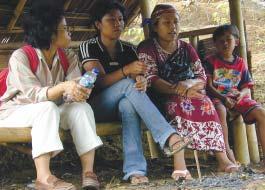
Initially, Forest School carried simple expectations: to build confidence and teach literacy, with a dose of elementary farming. W ith no education past the age of 6, locals initially struggledwith most issues. But patience yielded progress, and with RMI’s help, one villagebecame the first in West Java to conduct a community mapping project.
“Now we have workshops on critical laws, and understand our rights in relation to companies and government,” says Elly, a charming 23-year-old farmer who struggles to produce enough income and food for her husband and three kids on her one acre of land. “Before, we were scared to manage PP’s land, but we’ve become courageous.”
In 2001, PP initiated a massive logging campaign on the pine trees that the farmers had sustainably harvested—selling the wood and resin—for generations. RMI, with international assistance, lobbied against the logging and worked locally to give some control back to the farmers.
The logging ceased, and RMI’s newly formed female co-op occupied the land. RMI provided seeds for horticulture, promising locals that the soil would be fertile enough to produce healthy crops within five years. RMI also suggested terracing the land with dry fruit trees, a foreign concept to the villagers who had previously only terraced less durable wet rice fields.
Last spring, RMI learned about a government contest offering 2,500 fruit tree seedlings to a needy village. RMI scripted a PowerPoint presentation on behalf of Malasari and taught the female leaders to deliver it. They impressed and won.
Now, as Nani teaches her group on a grassy hillside, the women are brainstorming on how to increase their income. One group suggests shooting the monkeys that have recently been invading their gardens. Nani explains how logging and mining have destroyed the habitats of the endangered Javan leaf and black leaf monkeys, but most of the women cannot grasp why Nani cares to preserve the animals that consume their crops. So she resorts to another explanation: rare species can attract foreign visitors.
It’s a subtle hint with a larger purpose. Nani has already devised a plan to attract educational ecotourism, and she’s gradually guiding them toward realizing it themselves. W ith a deeper understanding of Halimun’s political and environmental interests, the farmers can host Jakartan tourists, school groups, and foreign researchers. The program is modeled after the country’s wildly successful Bogor Botanical Gardens, an enterprise that raises awareness of natural resources by hosting thousands of urban visitors annually.
Halimun’s future remains misty—a government decree recently transferred all land owned by PP to the National Park, and anxiety among villagers is high that their land can now be legally confiscated at any time. But Nani’s Berkeley experience helps facilit ate her fight. She took a particular interest in organic farming at Berkeley, inspired by
| BREAKTHROUGHS FALL 2005
26
the marketing of organic products as a lifestyle, and prodded the Malasari villagers to devote 1.5 acres to organic farming, a move that offers protection against inflated fertilizer rates. She also created a network among farmers in Halimun and beyond, encouraging them to consume organic products and distribute surpluses to lower and middle class markets “to avoid the class divide of organic products in America.”
Nani’s biggest undertaking since her experience at the Beahrs ELP, however, may be the development of Kampung Pending, an infant NGO she founded to help RMI become self-sufficient, rather than continuing to rely on international donors. Kampung Pending is a large, bamboo-heavy complex an hour south of Jakarta. Its 70 beds and lecture halls provide accommodation and educational facilities for foreign researchers, school retreats, and corporate outings. Previously, RMI hosted Japanese and Korean researchers who made small donations. “Now, we’re professionalizing that with fees, housing, translation,” Nani says. The money goes to RMI and Halimun; she expects the enterprise to become a self-sufficient supporting income provider for RMI within five years.
While enthralled by her new business challenge, she keeps up her regular trips to Halimun. When asked where she vacations, an embarrassing grin paints her face, and she admits to taking only four vacation days since 1997. “I wouldn’t know what to do. If I’m tired, I just go back to the village and picnic with the farmers.”
After Nani’s forestry class, she takes a leisurely stroll around the village with three women, checking up on the infant crops and the terraced trees. They pause under a shaded bamboo hut. At first, it seems like nothing more than a short rest from the intense heat. But it is more. The women are doing something that was totally unimaginable only five years ago: they’re fervently expressing their ideas about how to expedite the area’s growth. Together, they look more like a group of farming friends than an NGO activist and villagers.
“The project never meets my expectations,” says the selfproclaimed perfectionist. “But there are always special people who make it worthwhile.”
Beahrs ELP:Shaping Leaders Makes a Worldwide Impact
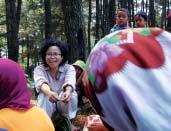
Nani Saptariani is one of nearly 20 0 alumni of the Beahrs Environmental Leadership Program.In a six-week course at Berkeley,CNR faculty and other experts teach international environmental professionals concrete skills for achieving results in their home countries.The course includes workshops on topics such as environmental policy, water quality,community forestry,and combating pollution,as well as sessions on leadership skills, strategic planning,and conflict management. Through the course,and a related small-grant initiative that provides seed money to conservation and sustainable development projects,the program has helped environmental leaders and policy makers from around the world achieve greater success.
Last summer was the program’s fifth year,and 39 participants showed up to refine their skills. Among them were:
Abdul Wahed Ahadi, who is reconstructing the devastated irrigation infrastructure of Afghanistan
and working on other institution-building projects. He says that after 25 years of wars and seven years of drought,rehabilitating Afghanistan’s natural environment is his highest priority and biggest challenge.
Abeena Akuamoa-Boateng pioneered a schoolbasedfeeding program in Ghana built around local food production,and she is working to expand the scopeof the program both within Ghana and throughout sub-Saharan Africa.The program simultaneously provides improved nutrition for children,encourages children to attend school,and supports local agricultural production.
David Velasco is director of international marketing for Café la Selva,a high-end Mexican coffee company that supports sustainable farming cooperatives in Chiapas,Mexico.By managing the sourcing,processing,distribution,and marketing of its coffee (a model known as “bean-to-cup”),Café la Selva aims to ensure that a higher percentage
of profits end up in the pockets of farmers. Under the direction of Robin Marsh,academic coordinator of CNR’s Center for Sustainable Resource Development,and David Zilberman, professor of agricultural and resource economics, the Environmental Leadership Program recently opened a regional center in St.Petersburg,Russia, and expects to open additional regional centers in coming years.The program is increasinglydedicated to projects that can be replicated on a larger scale. The program was established with a $1million gift from Berkeley alumni Richard and Carolyn Beahrs. Additional funding is always welcome,and private donations are critical to funding travel and course fees for environmental leaders with limited financial resources.
To support the program or learn more,call Kathryn Moriarty Baldwin at (510) 643-6641.
College of Natural Resources http://nature.berkeley.edu | 27
–Adam B. Ellick, a 2004 Fulbright Scholar in Indonesia, is an international freelance journalist. For more information, visit www.adambellick.com.
“In 1978, the government occupied our land and we said okay. Now, we can maintain complacency, or we can start a newgeneration that says ‘go to hell.’”
My Story:
Presidio Ecologist Te rr iT homas
Interview by Patrick Farrell
Portrait by Alexander Warnow
Above: Terri Thomas,the director of Natural and Cultural Resources at the Presidio Trust,at Crissy Field—site of 20 acres of restored tidal marsh and 13 acres of surrounding dunes,where over 100 species of birds and fish have made a comeback.
Right: At the Presidio’s Inspiration Point,crews removed encroaching Monterey Cyprus,Monterey pine,and eucalyptus to restore a rare serpentine grassland.In doing so they also recreated a forest landscape designed by the U.S.Army in 1883, and opened up the view for visitors,putting the “inspiration” back into Inspiration Point.

| BREAKTHROUGHS FALL 2005 28
Terri Thomas,‘76,is the director of Natural and Cultural Resources at the Presidio of San Francisco, the emerald parkland and former Army base overlooking the Golden Gate.Home to some of the last natural habitats in San Francisco, the Presidio is an urban oasis for rare and endangered species.A CNR forestry alumna,Thomas has been the top ecologist at the Golden Gate National Recreation Area and has also worked in Yosemite National Park,Shasta Trinity National Recreation Area,and Crater Lake and Everglades national parks. The Presidio’s urban setting,unique mission,and significant place in history pose several challenges for both natural and cultural resources management. “Learning how to operate a national park that is required to be financially self-sustaining is a challenge,”she says.“There are constituents who want it restored as closely as possible to its natural state, and others who want it restored in a way where the complex human history of the landscape is visible. Balancing it all and keeping it sustainable is an exciting project.”
WWhen I was growing up, I spent summers atour family cabin at Fallen Leaf Lake in the Sierra Nevada. My father also went there when he was a boy. That was where I was first inspired to work with nature somehow. That cabin always felt more like home than my urban home. When I graduated from Berkeley, I went to teach for the Yosemite Institute, an environmental education school. That’s where I had a “you’ve got to connect people to nature” moment. Inspiring people to care for nature can make a difference.
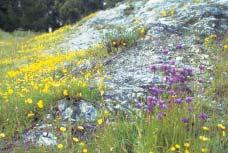
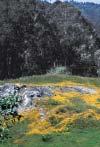
My 15 years at Golden Gate National Recreation Area built on that moment. My focus has been developing programs that link the public to the natural world— including, community-based volunteer stewardship habitat restoration, and education programs. Examples include monitoring carnivores with telemetry, growing native plants, restoring habitat for rare species, and monitoring birds.
My father is an artist and my mother an educator. They are creative people, and I try to be creative in what I do here as well. It’s an interesting and fun challenge to design this place around science, ecology, history, and recreation.
When I started at Berkeley I was a zoology major, but then I realized that I was more interested in applied work, so I switched over to forestry, with an emphasis in wildlife. After working a few years, I went to grad school at the University of Washington to focus on restoration science in national parks. That was the beginning of a decade-long career focus on ecological restoration programs.

College of Natural Resources http://nature.berkeley.edu | 29
It’s interesting how many people don’t know about the Presidio’s potential. Many don’t know that the Presidio has such a variety of species. There are more than 350 native species of birds, mammals, reptiles, amphibians, and fish that live here. Just last year, one of our studies found more than 50 species of native bees alone. The rich biodiversity is still being explored, and we’re finding out new things all the time.
There’s also a lot that the park needs. The landscape isn’t pristine; it’s fragmented with a lot of disconnected pieces, and we’re trying to put some of those pieces back together. Although it will never be a pristine natural system, the mosaic of landscapes—designed, forested, and natural—supports valuable native species biodiversity and provides a wildlife corridor in a dense urban area.
We’re being innovative in our approach to the Presidio’s landscape, which can enhance restoration potential. For example, there are many landfills in the Presidio that need remediation. Often this is accomplished by putting a protective cap on the landfill, but we are excavating most Presidio landfills to the native soil layer instead, and restoring those sites as closely as possible to their natural condition. So far, we’ve removed landfills in areas that were once serpentine grassland, sand dune, and riparian systems. If all goes well, they will thrive as those important and rare habitats again. The first project has progressed, and this year plant survival is good and
One of the most rewarding parts of Thomas’job,she says,is working closely with community volunteers.“None of the agencies that are in charge of these areas could afford these work crews.They’re dedicated and they love what they do. We are fortunate to attract 40,000 hours of volunteer work a year—the equivalent of 10 full-time workers.”At left,volunteers young and old work to enhance an important habitat for quail.Says Thomas: “Seeing wildlife and rare species return to what looked like a parking lot three years ago is really motivating.”
we’ve started to see quail and the federallylisted Presidio Clarkia return to the landscape.


The most exciting thing for me is bringing in the public. They see firsthand that they can make a difference by tracking fox, collecting native seed, planting native plants, and even pulling weeds. Since many people live close to this national park, they can have an ongoing relationship with the landscape, and experience the thrill of watching it change and thrive. Restore a little patch of barren land and soon they will see it teeming with wildlife. Plants blossom, insects come, then swallows eat the insects. Gophers move in, and hawks and coyote hunt the gophers. Volunteers see that when you restore even a small patch of ground, the return on your efforts is exponential.

| BREAKTHROUGHS FALL 2005
30
Courtesy Presidio Trust
Courtesy Presidio Trust
A lexaander Warnow
Honor Roll of Donors
College Support
The College of Natural Resources gratefully acknowledges the alumni, friends,foundations,and corporations listed below.Their gifts and pledges support every aspect of the College,including research,scholarships, outreach,graduate and undergraduate students,scientific equipment, facilities,and special programs and projects.The list belowreflects donors giving $100 or more.We thank all our donors for their loyal and generous support.
$1 million and above
Russell L.Rustici,‘48
*Margaret Thompson Van Den Bosch,‘45
Gordon E.& Betty I.Moore Foundation
$500,000 to $999,999
Li-Chiang Chu,‘64
$100,000 to $499,999
Raymond C.Carrington,‘53
Chiron Corporation
Dow AgroSciences LLC
National Parks Foundation
The David & Lucile Packard Foundation
Searle Scholars Program
Two Blades Foundation
$50,000 to $99,999
Professor Emeritus Irma Adelman,‘49 & Alex Adelman
*Theodore W.Daniel,‘34
California Table Grape Commission
Dr.Park S.Nobel,‘65
Resources Legacy Fund Foundation
Whitmire Micro-Gen Research Laboratories,Inc.
$10,000 to $49,999
Acterra
Adelle Davis Foundation
The Eva Benson Buck Charitable Lead Trust
Robert T.Brownscombe,‘41
California Pistachio Commission
California Tree Fruit Agreement
Central Coast Vineyard Team
John Innes Centre
Crompton Uniroyal Chemical
Dow AgroSciences LLC
The Estamar Trust
Dr.Orville J.Golub,‘44 & Ellina Marx Golub,‘39
John H.Gross,‘47
Allan Halden,‘63
Marian Freitag Halden
Howard Hughes Medical Institute
K/TFoundation
Kaiser Permanente
Mira Solutions,Inc.
National Geographic Society
Pear Pest Management Research Fund
*Professor Emeritus Evert I.Schlinger,‘50
Schlinger Foundation
June Cuff Smith,‘48
Springer-Verlag GmbH & Co KG
Suterra LIc Oregon
Tetra Tech,Inc.
US Trust Company NA
Venter Fraser Foundation,Inc.
$5,000 to $9,000
Bayer CropScience
Cerus Corporation
Dupont De Nemours & Co
Dr.Herbert M.Hull,‘46 & Mary M.Hull
International Society of Arboriculture Research
Professor Sydney G.Kustu
The Leakey Foundation
Dan F.Lee
Ivan B.Lee
Gregory S.Lyon,‘34 & Theresa Lyon
Mendocino Redwood Company
Foster E.Murphy,‘48
Murphy-Payne Charitable Trust
Dr.Robert O.Nesheim
Dr.Roderic B.Park & Catherine Bromage Park,‘66
Pebble Beach Company
Petro-Canada
Safari Club International Golden Gate Chapter
Sacramento Audubon Society
Scentry Biologicals Inc.
Shasta Wildlife Conservation Foundation
Sierra Foothills Audubon Society
Syngenta Crop Protection Inc.
Dr.Jennifer Meux White,‘67 & Dr.Marshall White,‘67
William L.Woods,III,‘73 & Kathleen C.Woods
Stuart Woolf,‘82 & Lisa Coulter Woolf,‘82
Woolf Enterprises
$2,500 to $4,999
Ar vesta Corporation
California Olive Committee
John L.Casazza,‘77
Cerexagri,Inc.
Del Monte Fresh Produce Company
Grand Canyon National Park Foundation
Donald L.Haid,‘97 & Hallidie G.Haid
William E.Hair,‘83
*Professor Emeritus Robert G.Harris,‘75 & Linda K.Harris,‘75
Frances Joos
E.Robert Munsey,‘69 & Kathy Munsey
The San Francisco Foundation
San Luis Obispo County
Community Foundation
Ruth M.Schubert
Joel R.Singer,‘79
John F.Swift,‘76 & Kirsten Swift
Deborah E.Tuck
$1,000 to $2,499
Dr.Barbara Allen-Diaz,‘75 & David V.Diaz
American Ornithologists Union
Benziger Family Winery
Boyce Thompson Institute for Plant Research
Burton A.Anderson,‘49 & Alice V.Anderson
Claude Unselt Babcock,‘52
Bechtel Foundation
Mike Benziger
Phillip S.Berry & Carla G.Berry
California League of Food Processors
Nancy Dawson Christensen,‘50 & Deal Christensen,Jr.
Donna Schemanske Coit,‘72 R.& Ken Coit
Elsevier,Inc.
F. Eugene Forsburg,III,‘75 & Kass Green,‘74
Robert E.Gilbert,Sr.,‘47 & Beverly S.Gilbert
Douglas M.Haefele,Ph.D.,‘85 & Eileen M.Robb,M.D.,‘76
Harriet L.Hamlin
Kathleen Ohlson Hartzell,‘72 & Christopher J.Hartzell
Andrew T.Hass,Jr.,‘46 & Annette Gimbal Hass,‘46
Dr.Suzanne Hendrich,‘82
Robert L.La France,‘55 & Diane Tocchini La France,‘57
Dean Paul W.Ludden & Linda Ludden
Natalie H.Magy
Professor Richard Malkin,‘67 & Carole J.Malkin
Dorothy B.Marsh,‘70 & Lee Marsh
Michael D.McKaig,‘70 & Kathryn A.O’Neal,‘76
National Recycling Coalition Inc
Margaret Lockie Navarra,‘70 & Anthony J.Navarra
Nufarm Americas,Inc.
Donald G.Parachini,‘63 & Mary A.Parachini
Pesticide Action Network
Dr.Robert T.Porter,‘40 & Mary K.Porter
Safari Club International Foundation
Stover Seed Company
Bernice D.Schwabacher
Sue W.So,‘93
Dr.Jeffrey P.Solar,‘74 & Rosalyn R.Furukawa,‘75
Dr.Richard B.Standiford,IV,‘78 & Judy L.Neasbitt-Standiford,‘78
Dr.Alexander S.Sun,‘71
Henry Vaux,Jr.,‘62 & Prindle Vaux
Professor Emeritus James Vlamis,‘35 & Nancy MacBride Vlamis,‘38
James P.Vokac,‘76 & Stacey T.Baba,‘77
Professor William E.Waters
Wells Fargo Foundation
Western Seed Association
Weyerhaeuser Company Foundation
Dr.Roger E.Wyse & Dr.Jaleh Daie
$500 to $999
Daniel A.Airola,‘76
Richard H.Allan,‘82 & Kelly L.Allan
Robert D.Archibald
Dennis Baldwin & Gail Baldwin
Kathryn Moriarty Baldwin & Gregory P.Baldwin
William M.Beaty,‘38 & Georgia F.Beaty
Stephen L.Beck,‘66 & Terry Duffy Beck,‘65
Mike J.Borel
J. Kevin Carroll,‘93
Central New York Community Foundation Inc.
Janet C.Dahlsten,‘71
Franklin E.Dillard,Jr.,‘47 & Millie M.Dillard
Dr.John M.Fenley,‘39
Professor Emeritus George M.Foster,Jr.,‘42
Sharon T.Friedman,‘75
Bryan Gingg & Beverly Gingg
Carole Johnson Gray,‘82 & Stephen N.Gray
Nelletje Groenveld,‘84
Paul W.Hartloff,Jr.,‘55 & Felicie Fitzgerald Hartloff,‘57
Elizabeth Little Helmholz
Bridget Taylor Huntington,‘46
Leroy A.Jebian,‘64 & Winifred Camp Jebian,‘65
Robert E.Jones,‘67
Roger G.Jones,‘39 & Norma Jean Jones
Professor Russell L.Jones
Douglas E.Kain,‘76
Karen L.Khor,‘91
Dr.Sabrina A.Lahiri-Field,M.D.,‘88 & Dr.James A.Field
Dr.John Lang
Trang N.Le,‘91& Dzung M.Do
Dr.Yong L.Lee,M.D.,‘81& Deanna L.Lee
Douglas R.Leisz,‘50 & Marian A.Leisz
Terrance M.Leong,‘79 & Vida Wong Leong,‘78
*Dean W.Lloyd,‘49
James R.Lugg,‘56 & Marilyn G.Lugg
Iona Rockwell “Rocky”Main,‘49
Mr.Thomas S.Mapes,‘63 & Carol Jalonen Mapes,‘64
Professor Dale R.McCullough,‘66 & Dr.Yvette Davis McCullough,‘70
Dr.Charles I.McNeill,‘75 & Joan Falkenberg McNeill,‘73
Dr.Suzanne P.Murphy,‘84 & William E.Murphy
James A.Nicholson,‘42
David A.Nielsen,‘84 & Catherine R.Nielsen
David C.Nuban,‘82
David Potter,‘36 & Elizabeth Lyman Potter
Rhonda S.Purwin,‘77
Thomas L.Richard,‘78
Phillip A.Rogers & Sally Toke Rogers
Henry M.Schacht,‘36
Carolyn Feder Schwartzbord,‘71& Ourry Schwartzbord
Dr.Michael H.Smith,‘73 & Nancy Kresser Lusk,‘64
Dr.Alan G.Stangenberger,‘65
David Cooke Thomas,‘82 & Tina Regan C.Thomas,‘83
Mark E.Triebwasser,‘71& Glenda L.Triebwasser
Roger Tsao & Theresa Y.Tsao
David L.White,‘79
Elizabeth R.Will
Diane S.M.Yu,‘96
George W.Davis Family Foundation
James A.Nicholson Family Trust
Laird Norton Family Fund
Northrop Grumman Litton Foundation
The United Way of the Bay Area
$250 to $499
Don Allen,‘57 & Sally Allen
Dr.Martha Moy Andrews,‘76 & David W.Andrews
Loukas G.Arvanitis,‘66 & Massina Arvanitis
Michael B.Beeman,‘67 & Marianne G.Beeman
William R.Bentley,‘60 & Ann E.Wilhelm
Bonnie Flynn Boccignone,‘86 & Douglas A.Boccignone,‘86
The Boeing Company
Stephen P.Bradley,‘60 & Barbara R.Bradley
Thorley D.Briggs & Gloria B.Briggs
James A.Burris,‘41& Lois L.Burris,‘48
Charles Burton,‘74 & Georgia Burton
John G.Carter,‘76
Children’s Hospital & Research Center Oakland
Dr.James L.Clayton,‘65 & Marilyn F.Clayton
E.Patrick Creehan,M.D.& Yvonne Creehan
Tara F.Creehan,‘99
Dr.Richard J.Dare,‘79
Emily Shideler De Bano,‘54 & Leonard F.De Bano
Nancy S.Drinkard,‘78
Marian Koyama Endo,‘78 & Dean K.Endo
Fidelity Investments Charitable Gift Fund
Dr.Susan C.Flores,‘77
Jack B.Fraser,‘77 & Maribel Helena Fraser,‘76
Lawrence J.Giles,‘67
Erica Sweeting Goode,M.D.,‘62 & Barry P.Goode
Mary Beahrs Grah,‘39
Dr.Ponciano M.Halos,‘74 & Saturnina C.Halos
Jerome F.Harrington,‘44 & Barbara Anderson Harrington,‘45
Robert T.Hatamiya,‘56 & Lillian Y.Hatamiya
Douglas W.Hayden,‘57
George R.Holden,‘47
Scott W.Horngren,‘78
Bruce Hostetler
Shen L.Howng & Sue-Faye L.Howng
Dr.Sammy Jung,‘71
A.Arlene Kasa,‘59
Joanna Renetzky Kingham,‘39 & Harry Kingham
David L.Knutson,‘53
Professor Watson M.Laetsch & Sita Laetsch
Ronald M.Lang,‘73
Donald T.Lauer,‘63 & Carol Millinich Lauer,‘63
Dr.Thomas T.Lawson,‘88 & Dina L.Rasor,‘78
Robert L.Leatherman,Jr.,‘49 & Inez N.Leatherman
C.P. Liu,Ph.D.& Ko-Ming Liu
Lockheed Martin Corporation
Mark R.Lundell,‘90 & Sonia D.Lundell
Robert T.Martin,‘51
Michael J.McCaffrey,‘69 & Georgia L.McCaffrey
McCaffrey Farms
Robert E.McConnell,Jr.,‘69 & Katherine L.Horn
Dr.Ann McGowan-Tuskes,‘80
Dr.Elmer L.Menzie,‘61& Emily L.Menzie
Jennifer Simone Money,M.D.,‘86 & Samuel Money,M.D.
Georgina A.Moreno,‘01& Barry Burch
Philip B.Nelson,‘87 & Kerstin Nelson
Nestle USA,Inc.Foundation
Judith A.Olney,‘79
Daniel D.Oswald,Ret.,‘58 & Willodean Henry Oswald,‘63
Brian R.Payne,Ph.D.,‘61& Almuth Fahrenbach Payne,‘61
Eran Pichersky,‘80
Liza C.Pichersky
Dr.Klaus W.Radtke,‘81& Yoshiko Radtke
Roger Samuelsen,‘58 & Jeane Stewart Samuelsen
Sangamo Biosciences Inc.
Eliana C.Schultz,‘78 & W.David Schultz
Grace S.Sherwin,‘70
Dr.Gail Miller Simpson,‘84 & David M.Roberts,‘74
Douglas M.Sinton,Ph.D.,‘73 & Wendy C.Sinton
Lawrence J.Slatkin,‘83 & Lisa Furman-Slatkin
Gordon J.Smith,‘76
Susan A.Snedecor,‘66
Peter A.Stine,‘75
Dr.John F.Stollsteimer,‘61& Angela Stollsteimer
Michael T.Sullivan,‘73 & Mary Mulligan Sullivan,‘75
*Deceased
College of Natural Resources http://nature.berkeley.edu | 31
Professor Emeritus Edward S.Sylvester,‘47 & Marian Uhl Sylvester
Sysco Corporation
Terri L.Thomas,‘76
Arnold C.Thompson,‘79 & Hayley G.Thompson
Eero T.Vaisanen,‘79
Dr.Thomas W.Von Geldern,‘84 & Cynthia L.Skrukrud,‘87
Kathleen D.Walt
Steven J.Wedel,‘87 & Pamela Wedel
Carita Edson Wenz,‘69
Dr.John M.Wenz,‘66
Tim T.Wong,‘61& Effie L.Wong
Winston A.Wright,‘99
Edmund Y.Young,‘98
The Rev.Steven J.Zembsch,‘79
$100 to $249
Dr.Ursula Knight Abbott,‘55
Abbott Laboratories Fund
Dr.Dennis J.Aigner,‘59 & Camille Bertolet
Charles H.Almestad,‘76 & Mary A.Almestad
Gary D.Andrews,‘78
Dr.Karen E.Aspry,‘81
John B.Bahme,‘83
Michelle L.Baker,‘01
James C.Bates,‘58 & Carol A.Bates
Dr.John C.Beghin,‘88
Alfred R.Bell,‘69 & Nancy B.Bell
James M.Benedict,‘71& Dottie Anderson
Professor Rolf W.Benseler,‘57 & Mrs.Donna K.Benseler
Joan E.Benson,‘77 & Dwight Hibdon
Leslie A.Beyer,‘77
Cameron H.Blackford,‘92
Mark A.Block,‘76
Dr.Carol L.Bowman,‘83
Stephanie D.Brooks,‘91
David L.Brown,‘95 & Christine W.Brown,‘92
Emma C.Brown,‘98
James K.Brown,M.D.& Letitia U.Brown
Josephine M.Bunn,‘74
David E.Buschena,‘93
Lawrence D.Camp,‘71& Constance A.Camp,‘71
Garth W.Casaday,‘77 & Patricia A.Baker-Casaday,‘78
Amelia Avelino Casaretto,‘83 & Jeffrey M.Casaretto
Ruth Woolson Catlin,‘77 & James L.Catlin
Thomas C.Chalmers,Jr.,‘78 & Joan K.Meyer,‘78
William F.Chamberlain,‘43 & Gladys Chamberlain
Chester C.Chan,‘49 & Annie Foon Chan,‘54
Andrew M.Chapman,‘77
Louis K.Cherin,‘38
Cindy Y.Chin,‘97
Helen Chow,‘96
Patricia Yamamoto Christman,‘74
Mae Clark,‘84
Dr.Richard S.Colman,‘70
Gerald R.Conley,‘63 & Frances M.Conley
Dr.James E.Constantz,‘73
Marjorie N.Cosens
Dennis W.Coulter,‘79 & Lauren B.Appling
Dr.Patricia A.Crawford,‘72 & Roger J.Crawford
Gerald B. Cullinane ‘49 & Carol White Cullinane,‘50
Dr.Clytia Montllor Curley,‘85
Stephen O.Dahl,‘87
Dr.Nita A.Davidson,‘88
Randy L.Davis,‘76
David E.De Laveaga,‘75 & Sharon H.De Laveaga
Robert R.Dean-Turner,II,‘68
George H.Dekay,Jr.,‘42 & Barbara Root Dekay,‘42
David M.Demoss,‘73 & Margaret R.Demoss
Victoria Gillmeister Dibbern,‘63 & John S.Dibbern
Dr.Peter K.Domoto,‘60 & Sylvia Takeda Domoto,‘61
Daniel V.Donovan,‘71
Matthew E.Doty,‘84 & Mary A.Doty
William C.Draeger,‘64 & Rosemary Shelton Draeger,‘65
Eileen Duag,‘79
Ruth C.Dyer,‘44
Edison International
Eric Eisenman,‘78 & Tina Eisenman
Dr.Joseph S.Elkinton,‘79 & Kathleen A.Conlan
Douglas C.Elliott,‘74
Ensure Pest Control
Thomas M.Eustis,‘81
Dr.Julie E.Faisst,‘73 & Mark S.Schwartz,‘69
Duncan Fallat,‘84 & Robin Peers
Elizabeth A.Fastiggi,‘97
Professor Lewis J.Feldman,‘67
Thomas A.Feldman,‘81
Fidelity Foundation
Diana Fish
Susan Bolger Foerster,R.D.,‘69 & Dr.James Foerster
Jacob M.Frankel,‘40 & Barbara W.Frankel
Yumiko Fujii
Geraldine Wakiji Furuzawa,‘65 & Richard Furuzawa
David J.Ganz,Ph.D.,‘93
Frank H.Goddard,‘74 & Melanie Goddard
Bruce F.Goines,‘74
Donald R.Gotthold,‘48 & Mary McGarr Gotthold,‘61
James P.Gray,‘65 & Mrs.Janet P.Gray
Ronald D.Graydon,‘73 & Lisa T.Graydon
Lorna MacDonald Groundwater,‘91
Marylee Guinon,‘80
Elizabeth Gustavson,‘93
Naomi Deguchi Guttmann,‘66 & Gary J.Guttmann
Richard P.Hafner,Jr.,‘50 & Mary Hagar Hafner,‘53
Jeffrey H.Halliday,‘73 & Margaret C.Halliday
Mark W.Hamlin,‘77 & Gayle Erbe-Hamlin
Un H.Har,‘95
Tracy E.Hart,Ph.D.,‘93
Dr.Lawrence P.Harter,M.D.,‘73 & Nancy Klisura Harter,‘75
GRADUATE SUPPORT IN ACTION
John H.Hastings,‘47& Jeannette W.Hastings
Ronald C.Hausmann & Mary Ann Muirhead
Dermot J.Hayes,‘86 & Caroline Hayes
Michael C.Hayes,‘75
Anne Delaney Heissenbuttel,‘75 & John F.Heissenbuttel
George W.Heller,‘42
Thomas K.Henderson & Barbara K.Henderson
Reed Hertford,‘60
Lisa L.Heschong,‘73 & Douglas E.Mahone
Dr.Bill F.Hieb,Ph.D.,‘59
Peter J.Hollenbeck,‘83
Harold M.Hoogasian,‘73 & Nikki Hoogasian
George R.Hooper,‘42
Dr.Rickey A.Hopkins,‘90
Julie J.Hsieh,‘01
Carol A.Hudson,‘85
William B.Hull,‘80
Joyce Madeline Hyman,‘76 & Peter Abrahams
Intel Corporation
Karin A.Jacobson,‘77 & Robert R.Seeman
Edward P.Jepsen,Jr.,‘40 & Karen Jepsen
David E.Jones,III,‘78 & Dianne S.MacDaniels
Robert L.Jones,‘80
Maureen Larrowe Jordan,‘83 & David A.Jordan
Samuel T.Kaneko,‘49 & Jean K.Kaneko
John R.Kao
Betty Courtright Keogh,‘41
Uheng Khoo,‘47
Mary M.King,‘80 & Stephen J.Eastwood
Dr.David C.Klonoff,‘72 & Arlene Isenstein Klonoff,‘81
Raymond B.Korsmeier,‘39 & Betty R.Korsmeier
Laflin & Laflin
Benjamin T.Laflin,Jr.,‘47 & Patricia Baker Laflin,‘49
Dr.Gary A.Lamberti,‘83
Paul R.Larson,‘52 & Vivien Hosking Larson,‘52
Lilliam L.Lau,‘99
Verner R.Laursen,‘55
Terry M.Laydon,‘69 & Bobbi Laydon
Dr.Mark D.Leibowitz,‘76
Paul W.Lin,‘97
Professor Emeritus Angela Capobianco Little,‘40
Professor Roy B.Litton,Jr.,‘41
Dr.Cheng Liu,‘96 & Peiqi Liu,‘97
William W.Liu & Lisa G.Liu
Susan Lo,‘88
Dr.Harold A.Love,‘88 & Dr.Diana M.Burton,‘86
Stephen E.Ludwig,‘81& Dana Hayakawa Ludwig,‘82
Kendra W.Lui,‘04
Dr.David H.Mack,‘84 & Kathleen T.Mulligan,‘82
Judith Smith Malamut,‘83 & John Malamut
Scott S.Manhard,‘76 & Meredith M.Manhard
Dr.Benjamin M.Maser,‘87 & Caroline Gebb Maser,‘87
Richard J.McCann,‘81& Ellen Morattie
Elizabeth J.McCosh-Lilie,‘68 & Lyle E.Lilie
Janet B.McDonald,Ph.D.,‘74
Steffen K.McKernan,‘89 & Ellen J.Glynn,‘88
Honorable Winton McKibben,‘47
Calanit Saenger, a Ph.D.candidate in agricultural and resource economics,has been honored with the Irma AdelmanGraduate Student Scholarship for the current academic year.Saenger,a Cal grad,has been a youth mentor,a social justice volunteer,and a think tank researcher focused on shifting economic and public policy toward sustainable practices.
Established last year by Professor Emeri ta Irma Adelman wi th a $5 0,000 commitment,the scholarship will support agricultural economics graduate students from Israel over the next five years.Such support is critical to CNR’s success.It helps the College attract the world’s best minds,and,in turn,the opportunity to work with extraordinary students helps CNR recruit stellar faculty.
Heidi A.Melander,‘91
Dr.Nicholas K.Menzies,‘84
Jay H.Messinger,O.D.,‘70 & Judith S.Messinger
Sharon A.Miller,‘82
Dr.Steven G.Montoya,‘84
Donna Rich Moody,‘70 & Arnold R.Moody
Andrew R.Moore,‘83 & Genevieve M.Moore
Peggy E.Moore,‘91
Ann J. Morgan,‘81
Joseph A.Naya,R.P.F.,‘94
Philip E.Nemir,‘69
Dr.Judith L.Nerad,‘80 & Richard A.Nerad
Robinson R.Ng,‘79
Dr.Jennifer L.Nielsen,‘90
Audrey Dale Nuechterlein,‘51& Duane C.Nuechterlein
Gloria Fong Ong,‘78 & Dennis Ong
Dr.Cindy S.Orser,‘85
Pacific Gas & Electric Company
Richard M.Paine,‘54
Jeannine Pao,‘98
The PQ Corporation
Tito N.Patri,‘55
Tito Patri & Associates
Lucille Frugoli Pawson,‘56
Pamela M.Peeke,M.D.,‘74 & Victor J.Peeke,‘74
Sonia Pena,‘98
Piyasena C.Perera,‘83 & Natsuko S.Perera
Drew A.Perry,‘78 & Renee J.Perrault-Perry
Dr.Hung T.Pham,‘79 & Heidi Pham
James Phillips
James D.Phillips,‘83
David S.Pitou,‘76
Roger L.Pollak,‘83
Wee Y.Pong
Benjamin Puttler,‘55 & Virginia Puttler
Dr.Theodore K.Raab,‘94
Garold D.Raff,Jr.,‘59
Dr.Cyrus A.Ramezani,‘91
Margaret J.Rands,M.S.,‘79
Ronald A.Ratto,‘73 & Catharine Haden Ratto,‘81
David M.Rector,‘78
Joshua A.Reilly,‘84
R. Thomas Relles,‘66 & Jill Dickson Relles,‘67
Matilda Remba,‘85
Bradford G.Rence,‘76
Donald L.Reukema,‘53 & Carla J.Reukema
Dale A.Roberts,‘74 & Katharine E.Roberts
Dr.Jacqueline Schwartz Robertson,Ph.D.,‘69
Deborah A.Rudnick,‘03
Dr.Lawrence W.Ruth,‘77
Robert G.Rynearson,‘76 & Cynthia Rynearson
James P.Ryugo,‘79
Sandeep Sacheti,‘97
David E.Salk,‘73 & Leah Kaizer,‘73
Edwin H.Satterthwaite,Jr.& Ruth C.Satterthwaite
SBC Communications,Inc.
Steven L.Schalla,‘76 & Holly Schalla
Marie ASchirmer,‘65 & Roger Schirmer
Dr.Sara J.Schmidt,‘81
Charles P.Schmitz,‘82 & Amy Urdang
John C.Schuyler,‘78 & Priscila S.Franco
Tom G. Schwan,‘83
Frederick M.Shanks,‘53 & Catherine Rhorabough Shanks,‘53
John J.Shannon,‘82
Jessica C.Siegel,‘98
David G.Silver,‘79
Randolph L.Sperry,‘77
Dr.William C.Stewart,‘86
Stephen M.Stohs,‘03 & Joanne Stohs
Col.Quentin C.Stokes,‘49 & Helen Marie Youngberg Stokes
Michael C.Stroud,‘69 & Georgia J.Stroud
Mary J.Stuard
Thomas W.Stuart,‘73 & Patricia C.Stuart
Changqing Sun,‘02
Nicholas A.Sundt,‘76
Marjorie Menoher Sutton,‘53 & Harold G.Sutton
Liana Lam Szeto,‘80 & Raymond P.Szeto
Professor Emeritus Yoshinori “Joe”Tanada,‘53 & Edna Tanada
Mark E.Teply,‘86 & Janet G.Cherry
Jack E.Throop,‘58 & Joanne P.Throop
Gail R.Tint,‘80
Carlos Torres-Verdin,‘91& Laurel Trevino-Murphy,M.S.,‘88
Keith E.Trotman,‘62 & Jane Claussen Trotman,‘61
A.Robert Tulk,‘74 & Janet Gertler Tulk,‘74
UBS
James S.Ukegawa,‘83
Carol A.Umland,‘76
United Way
University Of Utah
Louis M.Vasconi,‘86 & Victoria S.Vasconi,‘87
Richard G.Wade,‘76
Brent W.Wahlberg,‘43 & Jean S.Wahlberg
Barbara Encarnacao Walker,‘83
Dennis Jay Walton,‘73 & Barbara Smith Walton,‘73
David L.Ward & Rhoda E.Ward
Professor Clarence J.Weinmann,‘50 & Carol L.Weinmann
Linda C.Whitehand,‘66
Ronald A.Wiegardt,‘78
Duane C.Wildenradt,‘76 & Melinda L.Kovats
Professor Emeritus D.Emerton Williams,‘39 & Mrs.Margaret J.Williams
Catherine K.Wong,‘77
Edward S.Wong,‘48 & May L.Wong
Hendrick Wong,‘83
Barbara A.Wood,M.D.,‘68
Gail Work,‘81
Charles L.Woronick,Ph.D.,‘55
John M.Wray,‘79 & Sheila N.Wray
Greta N.Wu,‘86
Nishka M.Yudnich,‘61
Dr.Milton Zaitlin,‘49 & Marjorie Zaitlin
Xiaoming Zheng,‘99
Jeffrey D.Zimmerman,‘80 & Sabrina S.Simpson,‘80
Dr.Robert L.Zuparko,‘75 & Carolynn Harvey Zuparko,‘75
*Deceased
Adelman,a Cal alumna and a Berkeley professor from 1979 to 1994,is no stranger to this quest for excellence.She is one of the foremost development economists in the world,and is widely known for her pioneering critiques of “trickle-down” economic theory.
Through the Adelman scholarship,Saenger is now pursuing hergraduate research on how public policy can foster sustainable development,with a particular interest in critical water issues in the Middle East and California.“For me,this opportunity to give was rewarding on a very personal level,”says Adelman.“It feels especially good to help students who are a match with my own interests.”
| BREAKTHROUGHS FALL 2005 32
Class Notes
Share your news.Just use the mailer enclosed in this issue,visit http://nature.berkeley.edu/notes, or e-mail your update to breakthroughs@nature.berkeley.edu.
‘48
James B.Watson, B.S., Forestry,entered UC in 1939,and in 1941volunteered as an ambulance driver with the American Field Service attached to the British Eighth Army during the siege of Tobruk.He enlisted in the U.S.Marines in 1943 and served in the Pacific aboard the Marine carrier U.S.S. Block Island.In 1947 he got married and re-entered Berkeley.After a year in the U.S. Forest Service in Burn,Oregon,he returned to Berkeley to do graduate work in management.From 1950 until 1980 he lived in Berkeley and was employed by U.S. Envelope Company in Emeryville.He retired with his wife Margaret Ann to the Napa Valley,where he now grows Chardonnay and Merlot grapes. Their daughter,a veterinarian,and son-inlaw,a microbiologist,have a Napa Valley winery,Aetna Springs Cellars,which makes wine from their grapes. ‘59
John W.Thaxton,Jr., B.S., Forestry, served in the Army Air Corps during World War II as a bombardier-navigator,flying a B-17 “Flying Fortress”over Germany.He usedthe G.I. Bill for his college education and after graduation worked for Hammond, Jensen & Wallen as a forester,then for Weyerhanger,until he was recalled to active duty in the U.S.Air Force for the Korean War.John stayed in the USAF until 1969, when he retired as Lieutenant Colonel.
Brooke Alex Lambie, B.S., Conservation of Natural Resources,became a teacher naturalist with Santa Cruz County schools, and later worked in the Jamaican West Indies as a biologist and biology educator. She has a California teaching credential in biological sciences,an M.S.in science education,and a Ph.D.,and used her conservation education to become a college instructor teaching biology and earth and planetary science.“I take all my classes into the field to study the natural systems of the planet,”she says.Brooke has six children and has a house in Berkeley as well as one in the Central Valley.“I have worked for the State of California for 20 years as a science educator,and have used ideas developed in CNR in all my work,”she says.
‘72
Julie Nagle, B.S., Conservation of Natural Resources,has worked since 1974 for the federal government and is currently a computer and information technology specialist with the National Park Service.She says that she loves the national parks,“but working for the government has its frustrations.”She has continued her personal and professional education with classes includ-
ing English literature,economics,music,and dance,and she completed an environmental planning program at San Francisco State University in 1982.She lives in San Leandro with two sons,and drives a 2002 Prius hybrid car that she says is “a political statement as much as a means of transportation.”
‘74
April E. Fletcher, B.S., Conservation of Natural Resources,received an M.S.in Wildlife Biology and Management from Colorado State University and went to work for the U.S.Fish and Wildlife Service in 1976 She has been with the agency ever since,and is currently the invasive species coordinator for the southwest region,headquartered in Albuquerque,N.M.She has also done some freelance writing on environmental issues for local papers,and is currently working on publishing an anthology of works by older women.She lives in the Manzanita Mountains east of Albuquerque with her husband of 18 years and two dogs.
Crystal Adeline Johnson, B.S., Conservation and Resource Studies,moved to Hawaii in 1992,where she enjoyed hiking and swimming and worked for a large engineering firm as an energy analyst,assessing alternative energy fuels for the U.S. Department of Energy.After three years she moved to Boston and worked for the Massachusetts Aeronautics Commission, focusing on wetland issues.For the last five years she has worked in New York City, where she is currently a senior project analyst in the environmental planning and assessment office of the city’s Department of Environmental Protection.Crystal also writes articles for the Gazette,a newsletter of the New York City Parks Department. “Thank you,CNR,for providing an incredible education that fostered a connection to the environment that is truly reflected in my life,” she says. ‘92
Kenneth R.Hobson, Ph.D.,Entomology, teaches entomology,ecology,introductory zoology,and a senior capstone class on the origin of human behavior for the University of Oklahoma’s more than 800 zoology majors.He also teaches two classes for non-majors that introduce biological concepts and look at current issues in biology, as well as a summer course in insect ecology at the OU Biological Station.
‘93
Erik Terreri, B.S., Political Economy of Natural Resources,is a senior economist for Competition Policy Associates,Inc. (COMPASS) in San Francisco.COMPASS is
an economic consulting firm specializing in financial and economic analysis of policy, regulatory,and litigation matters for corporations,governments,and public-sector entities in the U.S.and around the world. ‘98
Ronald Gar tland, B.S., Political Economy of Natural Resources,attended the Bren School at UCSB,where he earned a master’s degree in Environmental Science and Management.After graduation in 2000,Ron volunteered as a restoration coordinator with the Friends of Sausal Creek,an urban watershed restoration group in Oakland.He was then hired as a restoration ecologist intern in the Mojave Desert through the Environmental Careers Organization (ECO). He was tasked with creating and implementing an arid lands restoration plan in critical desert tortoise habitat.Currently,he is the lead Bureau of Land Management restoration specialist for the California Desert District,assisting coordination of restoration projects in a variety of critical habitats.
‘99
Sarvy Mahdavi, B.S., Environmental Economics and Policy,worked as an investment banking analyst and then as a marketing specialist for an environmental consulting company.She is now attending the Bren School at UCSB,working toward her master’s degree in Environmental Science and Management.
‘02
Richard Brody, B.S., Conservation of Natural Resources,just received his master’s degree in physical geography and hydrology at UCLA,married,and bought a house in Topanga,California.He has an 18 month old baby girl named Sidney (after Sid Vicious),and is now doing wetland delineation and regulatory consulting at Impact Sciences in Southern California.
‘04
Jake van den Akker, B.S., Environmental Economics and Policy,is now working for Quality Assurance International,an organic certification firm in San Diego.
‘05
Catherine Sweere, B.S., Environmental Sciences and Integrative Biology,is a masters student in Oceanography at the University of Alaska,Fairbanks.
Robert Colwell, professor emeritus of forestry,1983 winner of the Berkeley Ci tation, and a pioneer in the field of remote sensing,died on April 14.He was 87.

Colwell was one of the world’smost respected leaders in remote sensing, a field he stewarded from the interpretation of aerial photographs to the advanced acquisition and analysis of many types of geospatial data.His career included nearly 40 years of teaching and research, a distinguished record of military service,and prominent roles both in private industry and as a consultant for many U.S.and international agencies.
Colwell earned a B.S.in forestry from Berkeley in 1938,and a Ph.D.in plant physiology in 1942.He was commissioned in the U.S.Naval Reserve,where he mastered photo intelligence during World War II.In 1947 he joined the faculty of the School of Forestry, where he developedmethods of aerial photography to identify tropical vegetation, determine water depth,and measure the prevalence of diseases in agricultural crops.
From the 19 6 0s on, Colwell pioneered new methods of satellite reconnaissance.He served as associate director of UC Berkeley’s Space Sciences Laboratory from 1969 to 1983,and he played a key role in NASA’s Apollo IX mission.He was also instrumental to the launch of LANDSAT1,a satellite that revolutionized the fields of cartography,forestry,geology, and land use.His subsequent work at Earth Satellite Corporation helped to map 6 million square acres of the Amazon Basin.
All the while,Colwell continued to serve in the Naval Reserve.In 1974 he was promoted to rear admiral,and in 1977 he was awarded the Legion of Merit by President Jimmy Carter.
Earlier in his career,Colwell served as director of UC Berkeley’s Forestry Summer Camp and was known as “Bullet Bob”for his habit of leading fullspeed-ahead student hikes,a style of leadership that spanned his career.
In his private life,Colwell was an active member of the Presbyterian Church and an avid trout fisherman who used aerial photos to assure abundant catches. He married Betty Louise Larson in April 1942.Their marriage lasted 57 years,until Betty’s death in 2000. He is survived by their four children and seven grandchildren.
—Cyril Manning
College of Natural Resources http://nature.berkeley.edu | 33
‘71
‘91
IN MEMORIAM
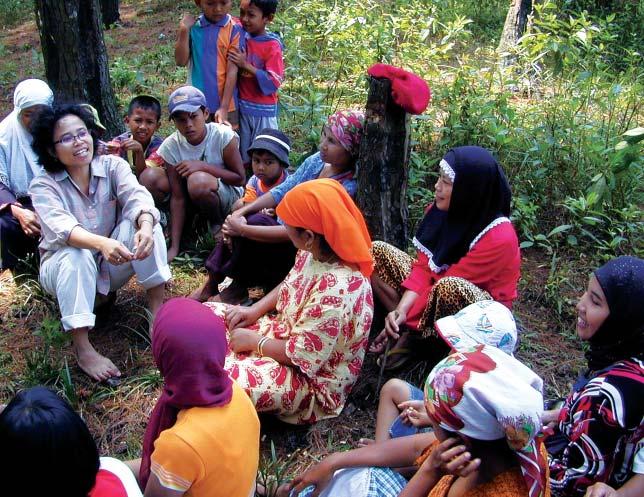
101 Giannini Hall #3100 Berkeley, CA 94720-3100 ADDRESS SERVICE REQUESTED Non-Profit Organization U.S. Postage PAID San Francisco, California Permit #2
Nani Saptariani,an alumna of CNR’s Beahrs Environmental Leadership Program,brings much more than farming knowledge to Indonesian villiagers.See page 24.












































 By Nathanael Johnson
By Nathanael Johnson






















